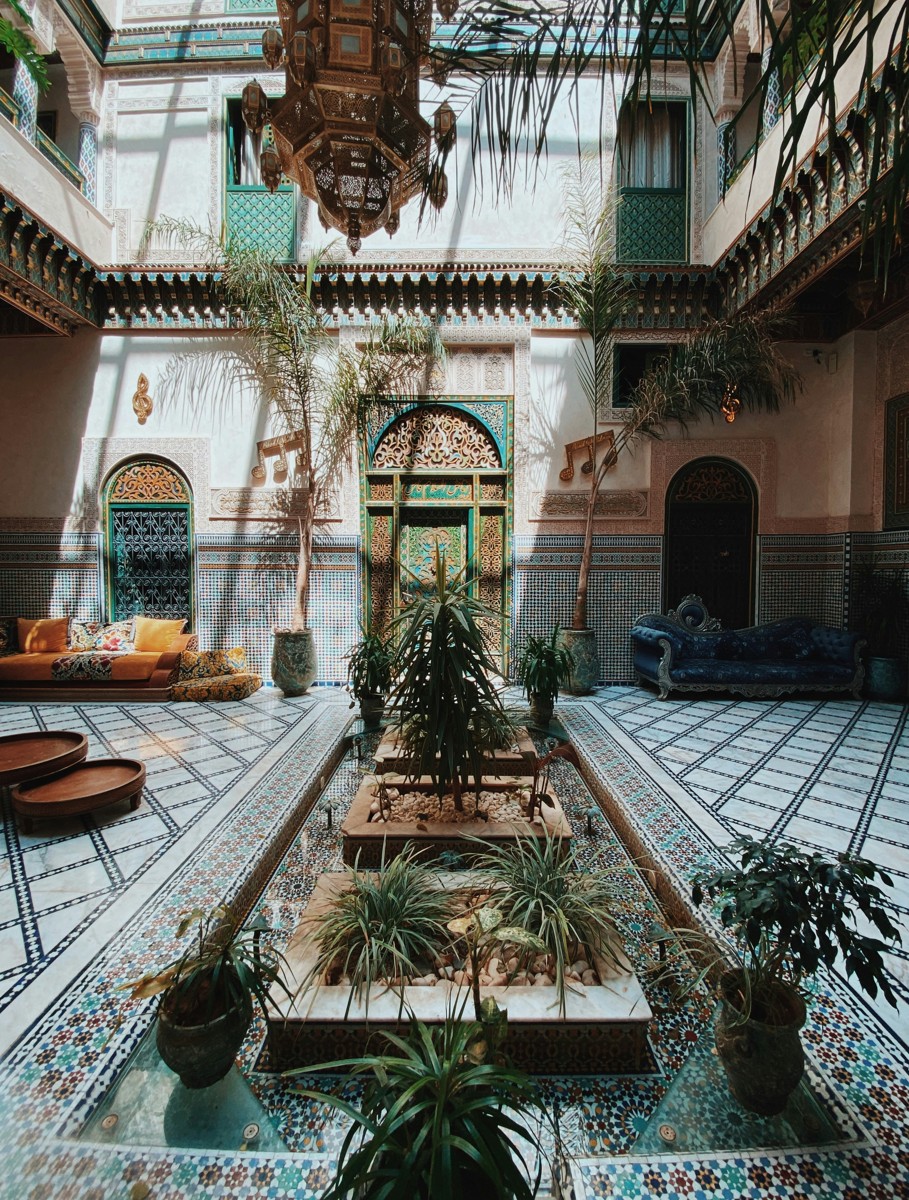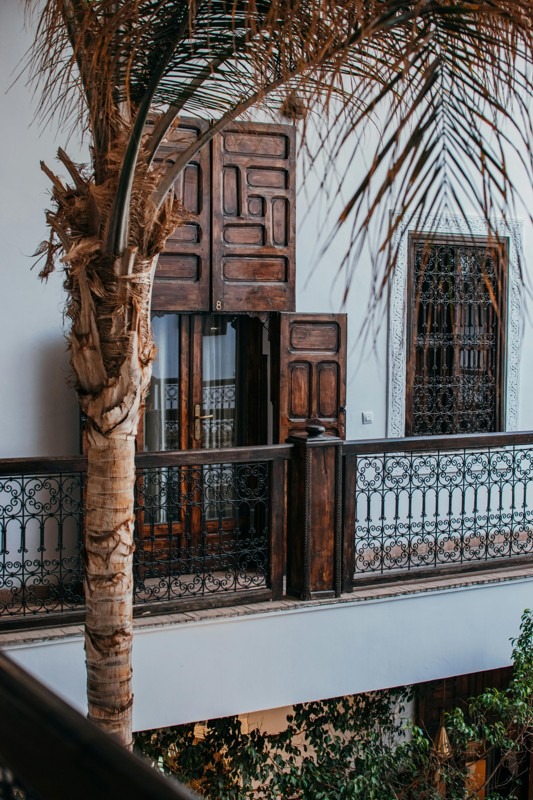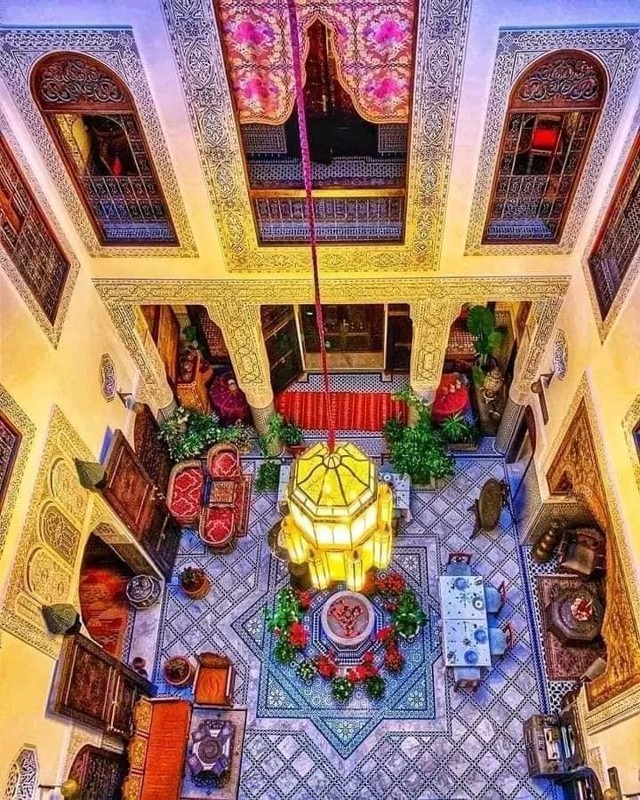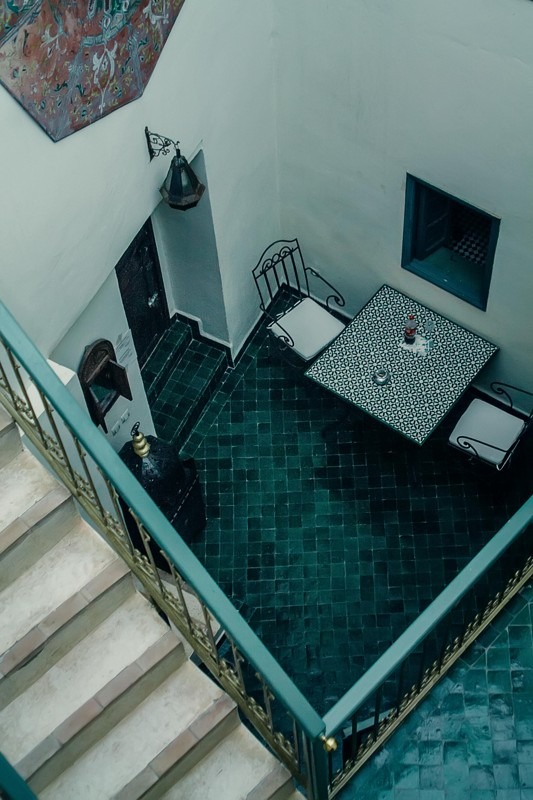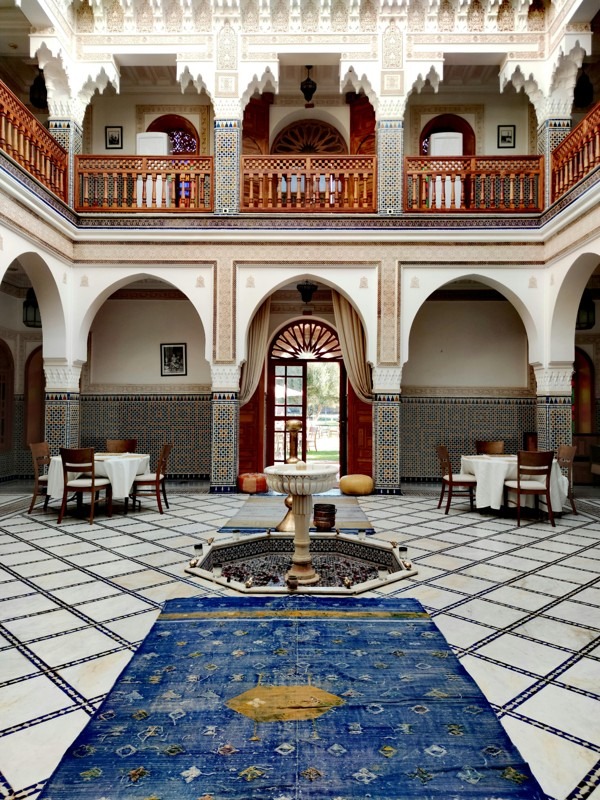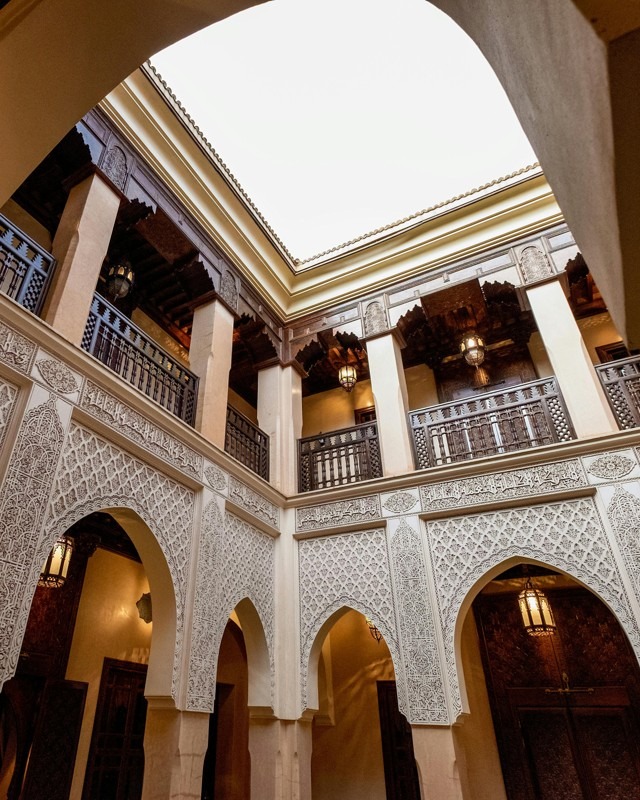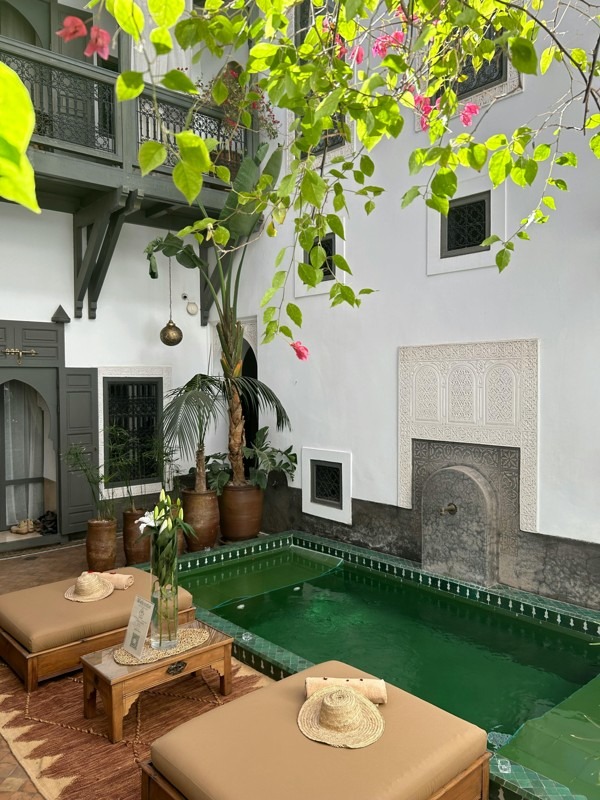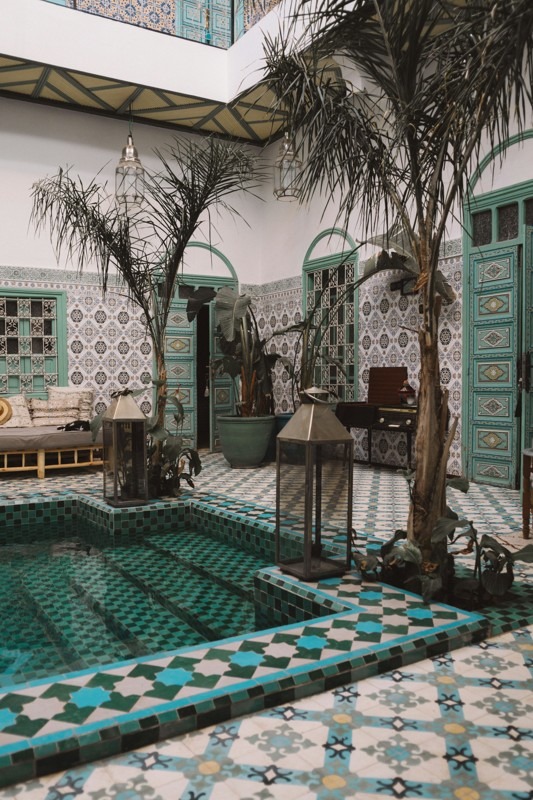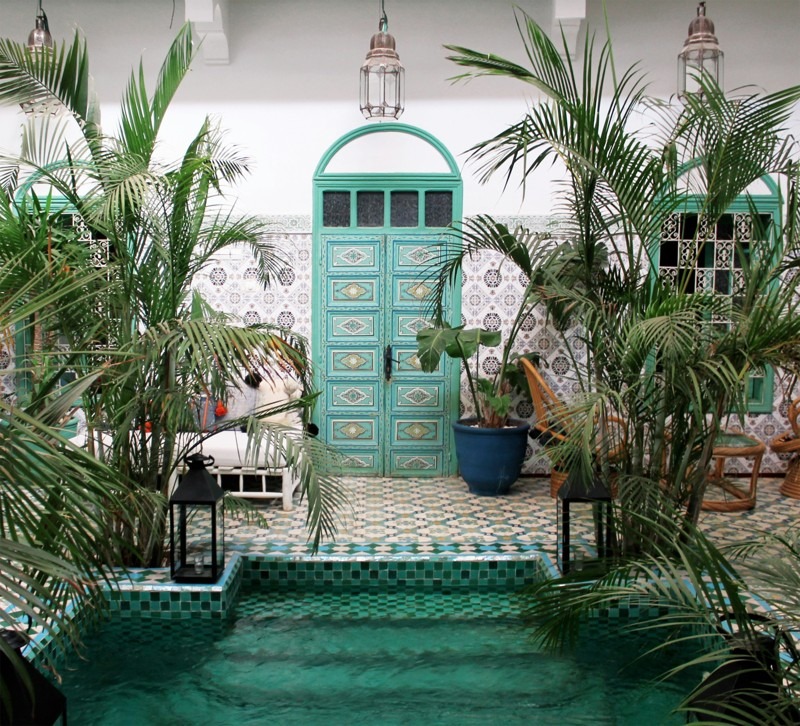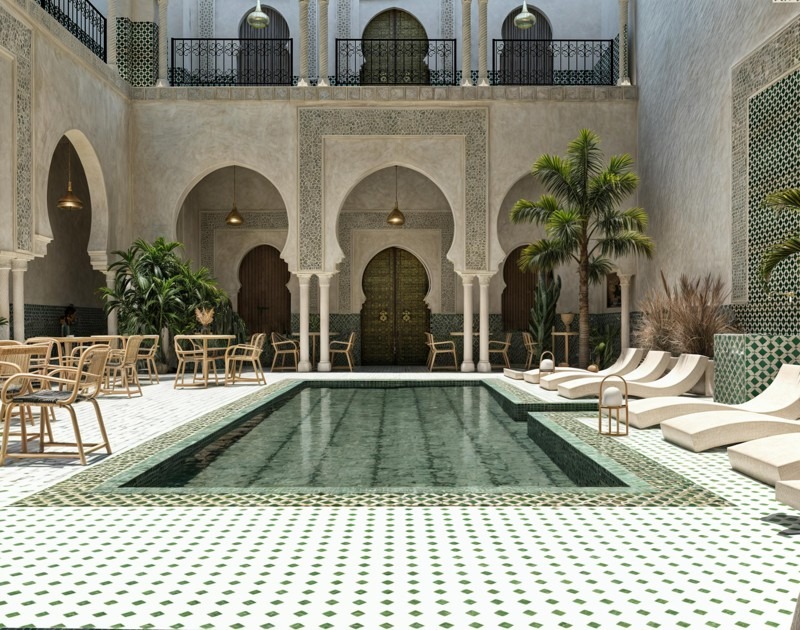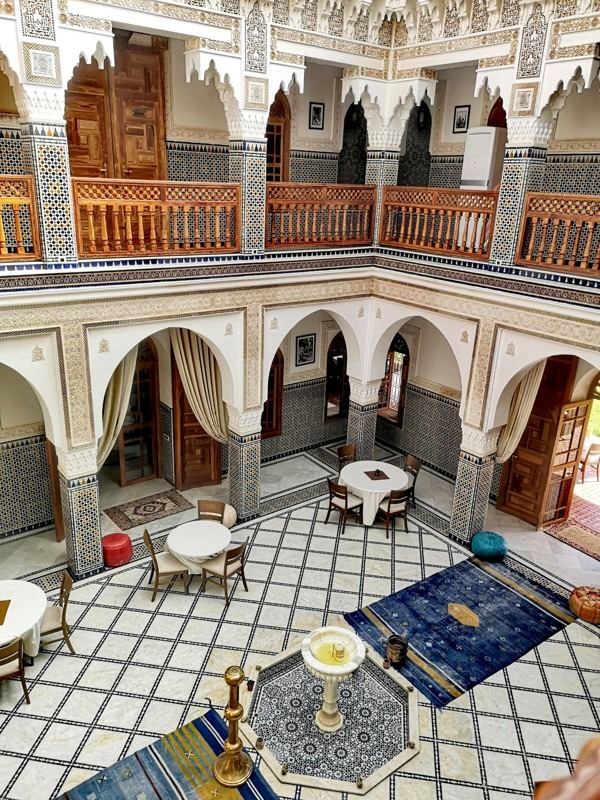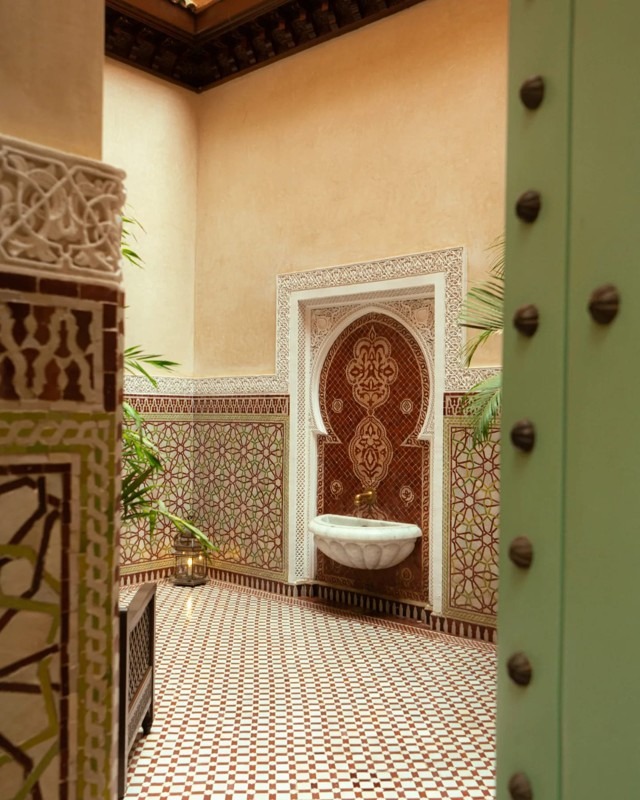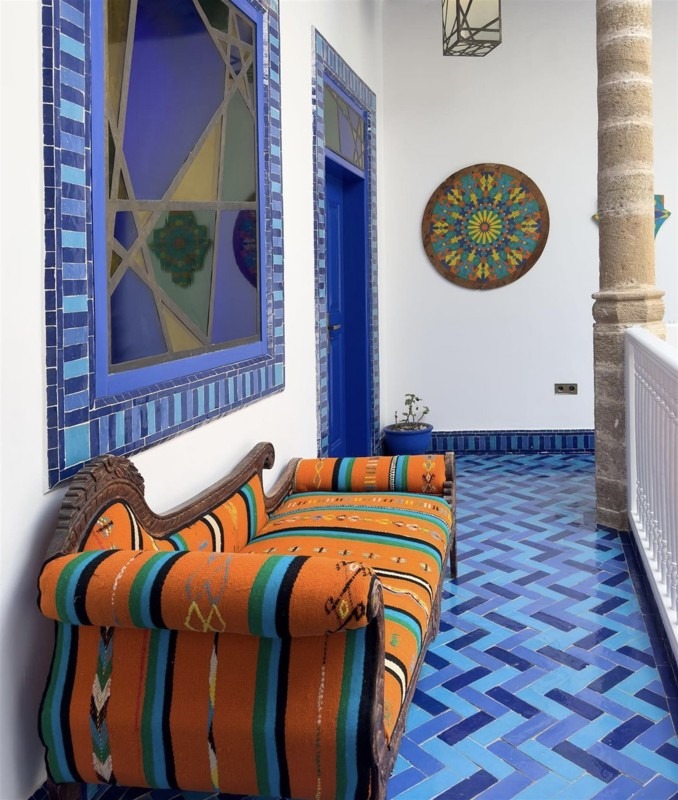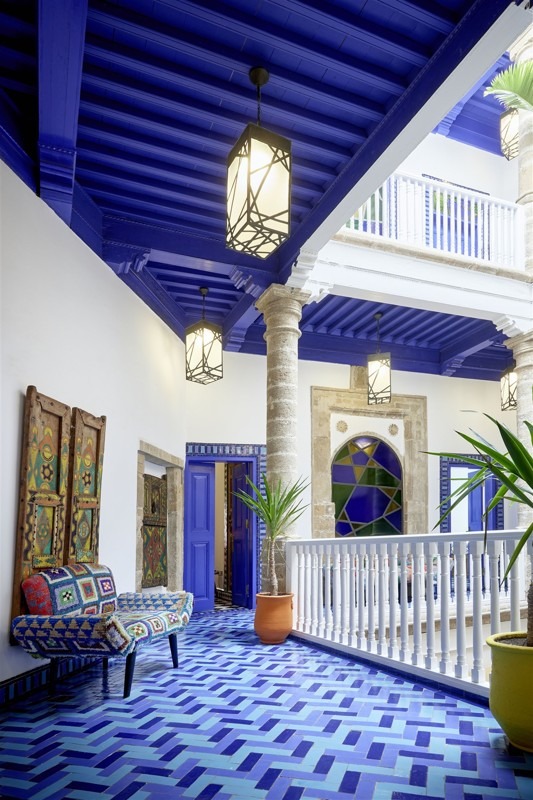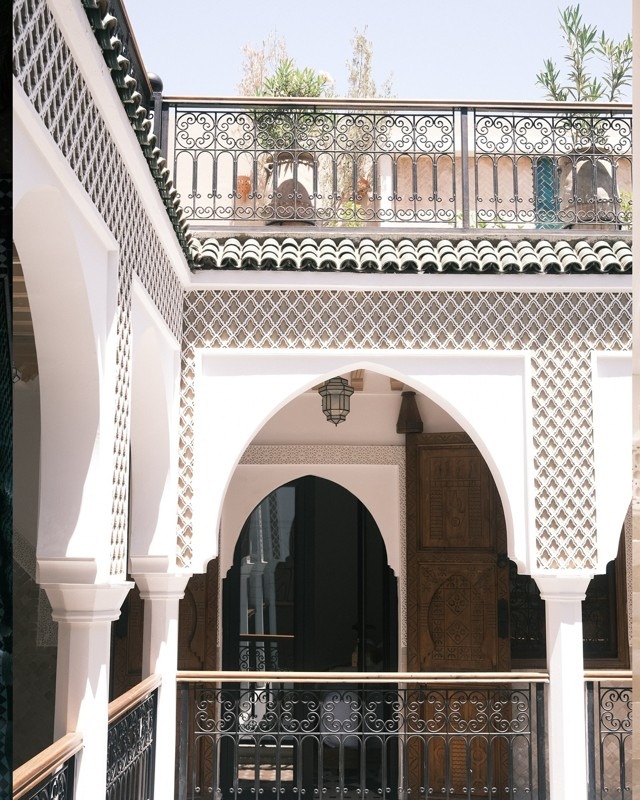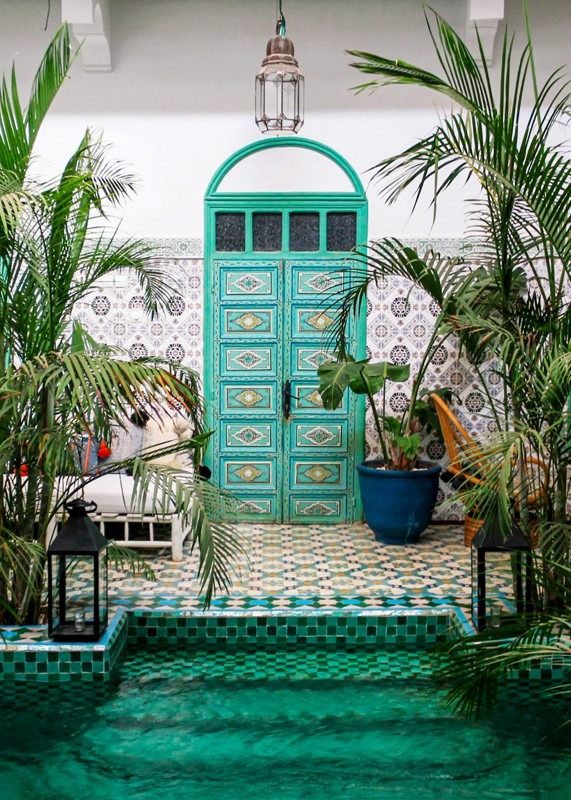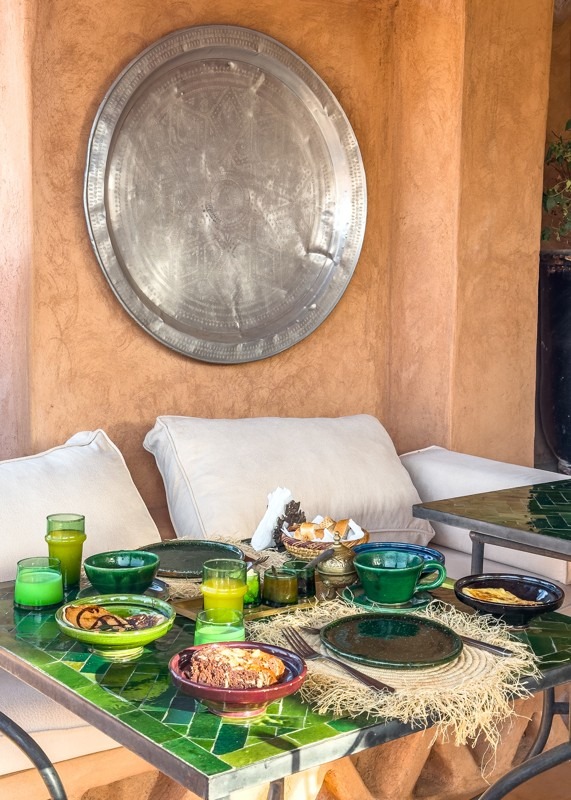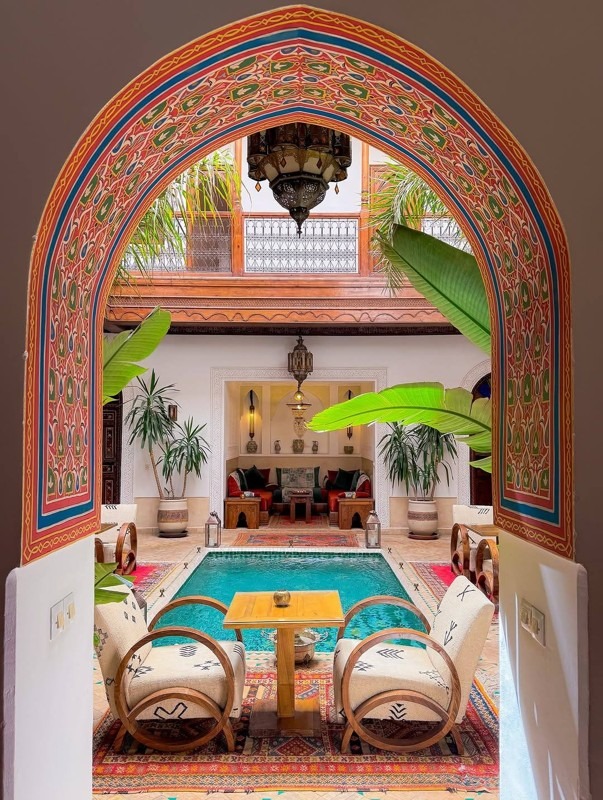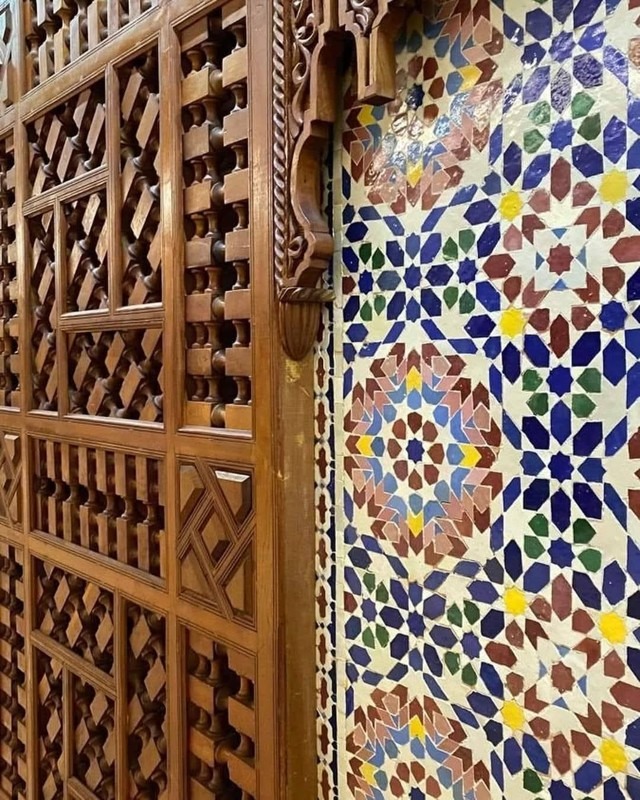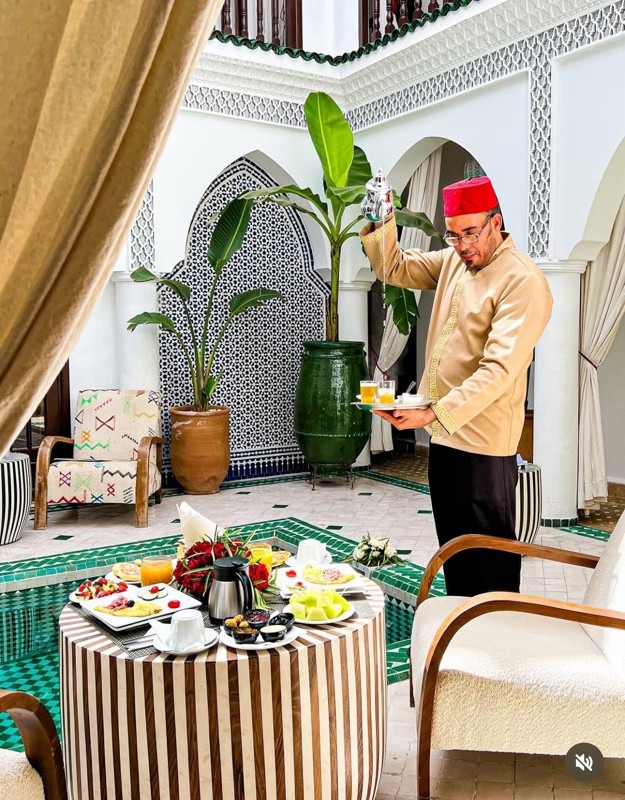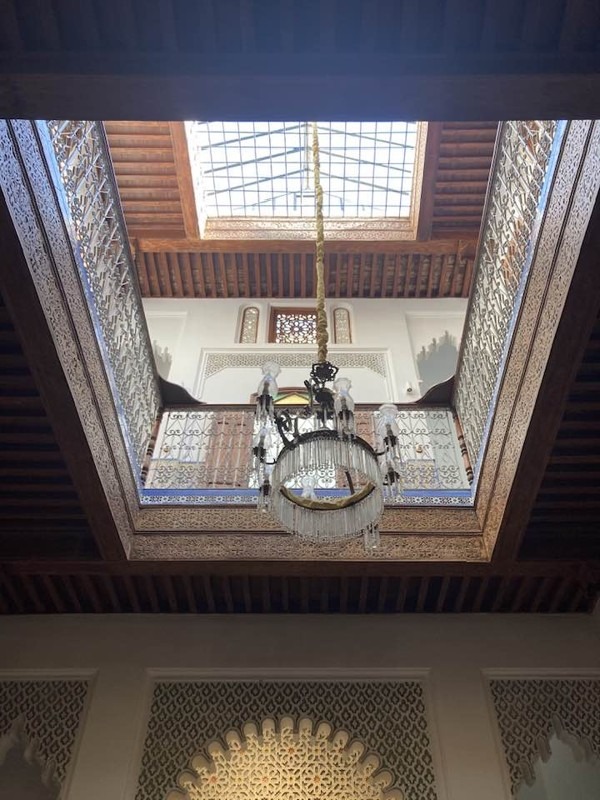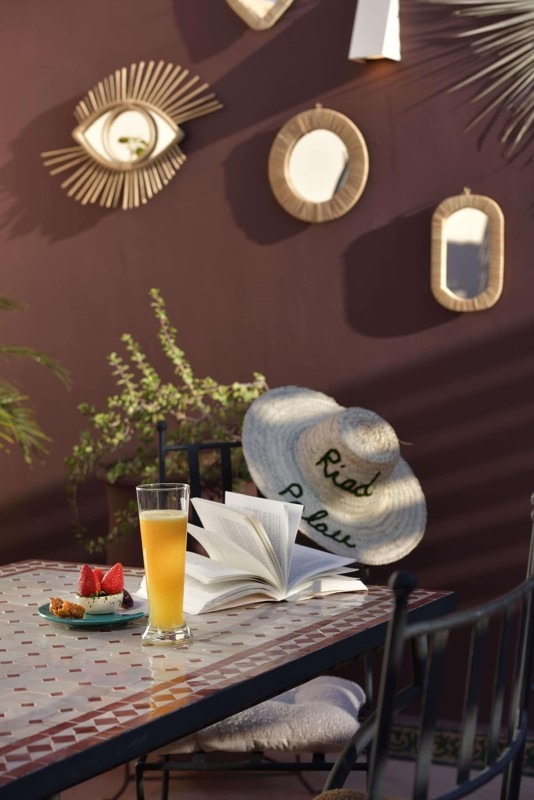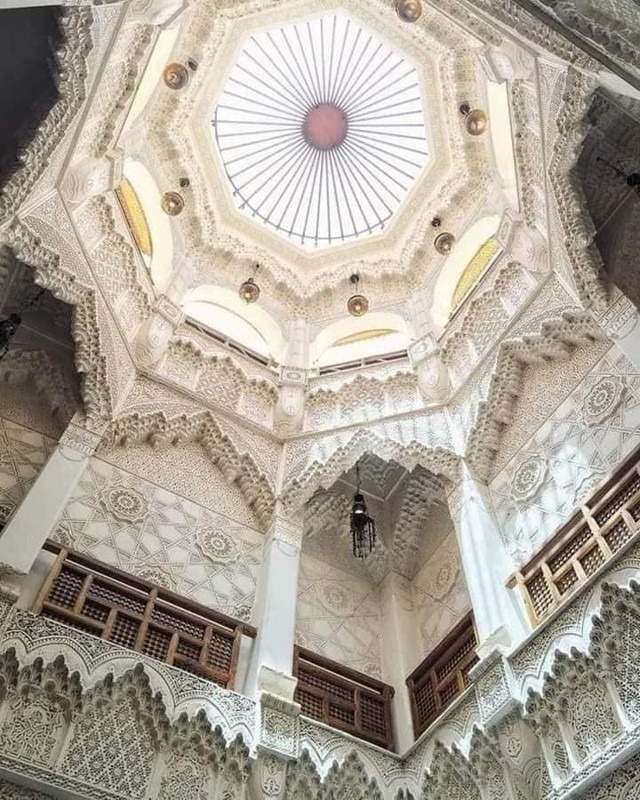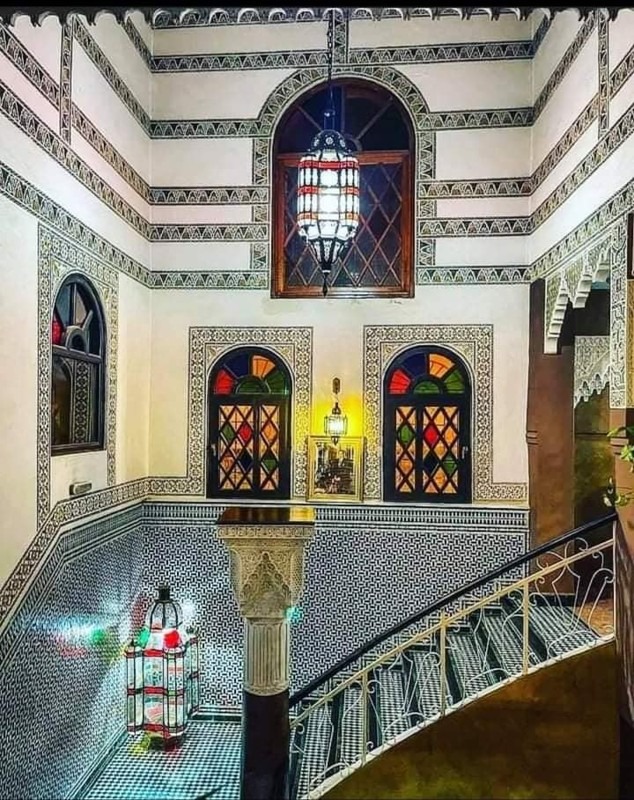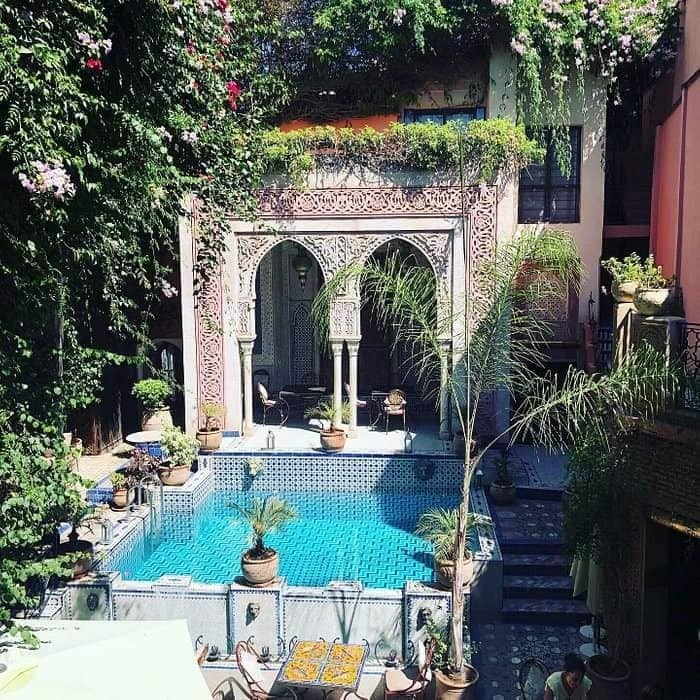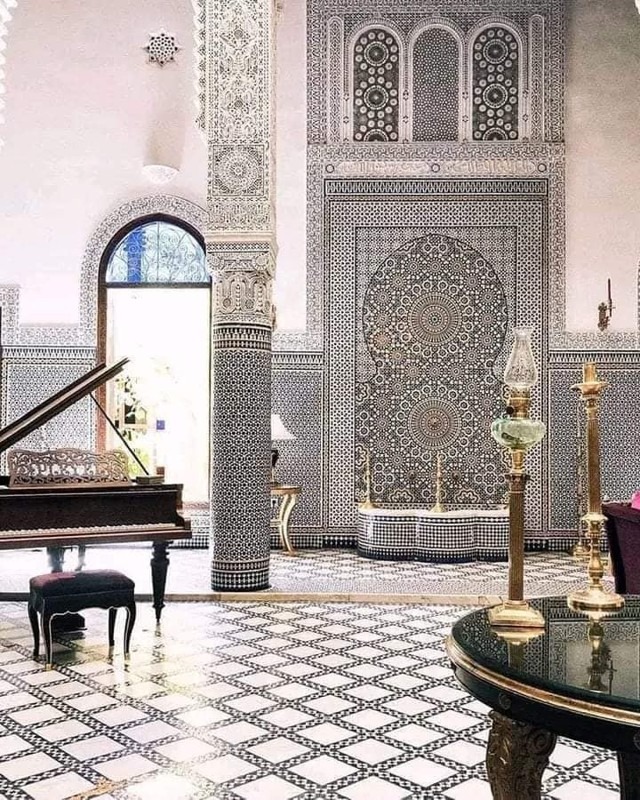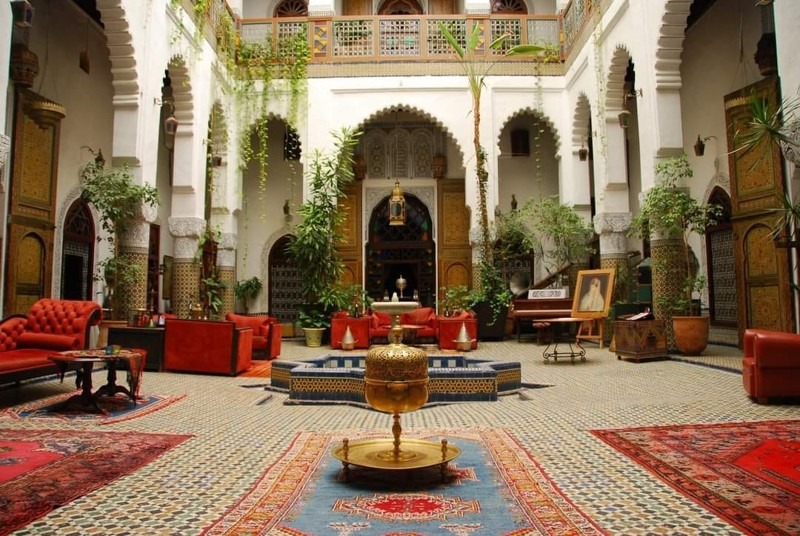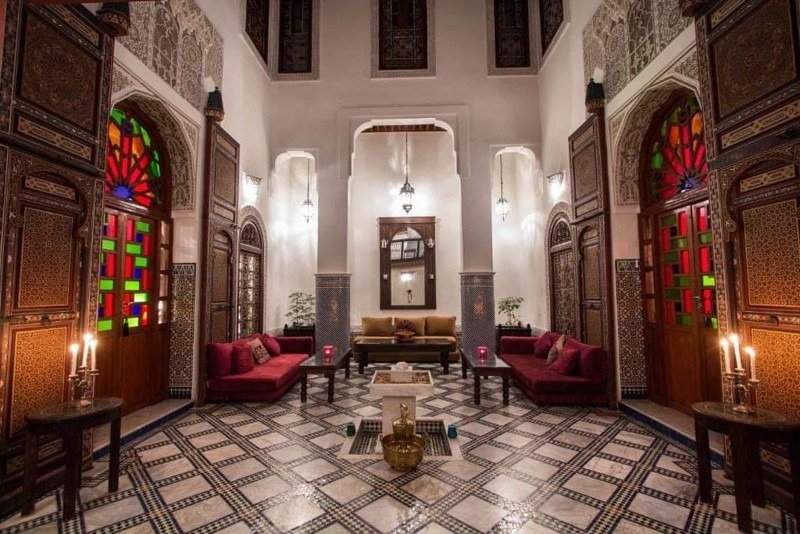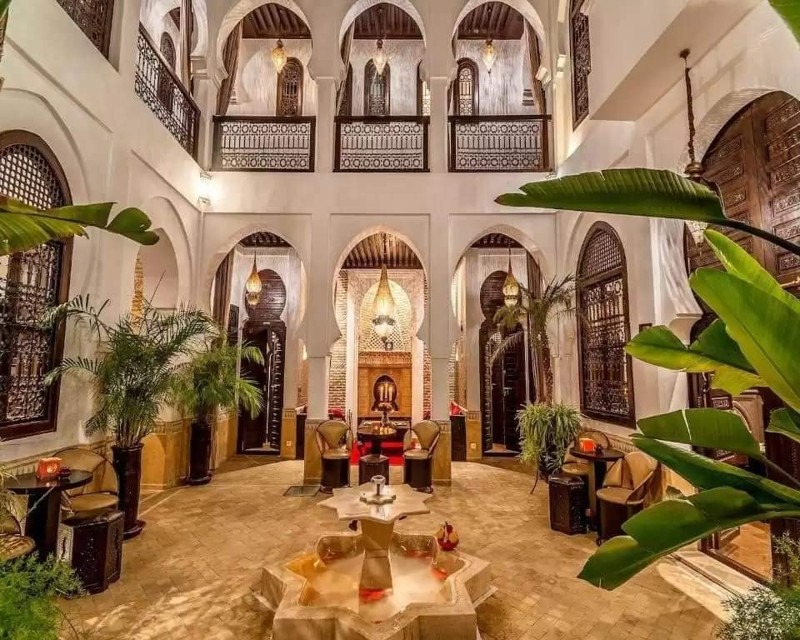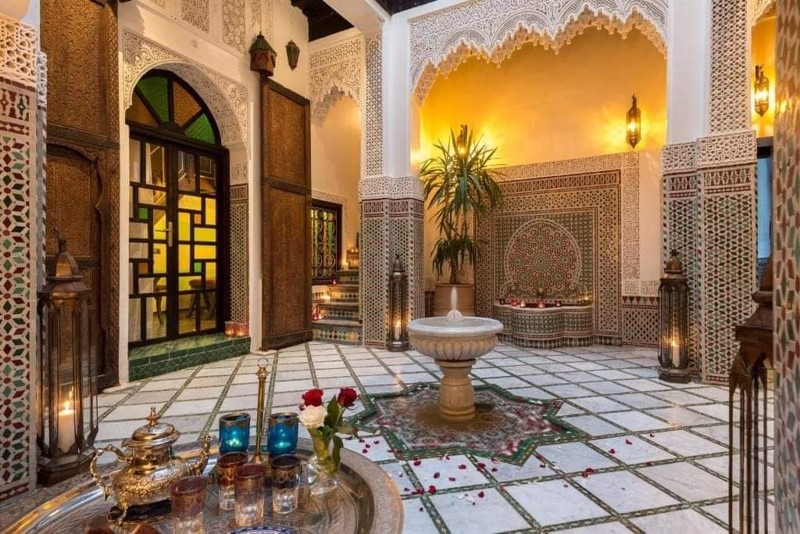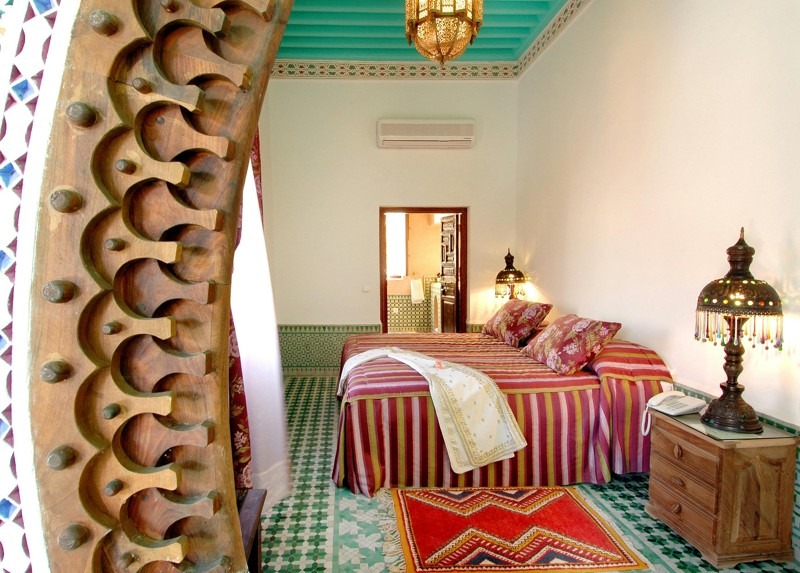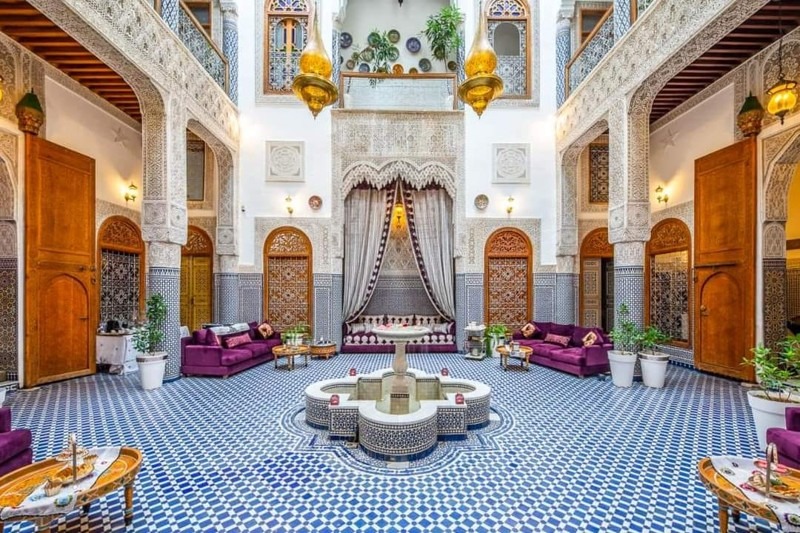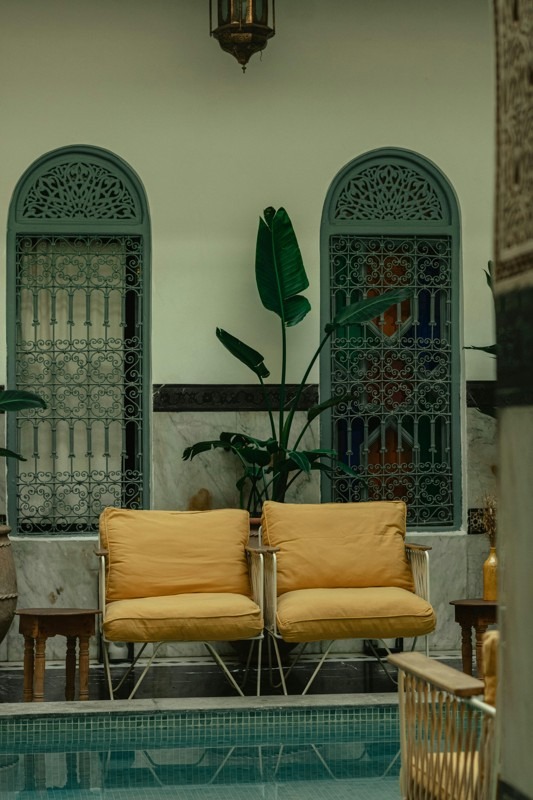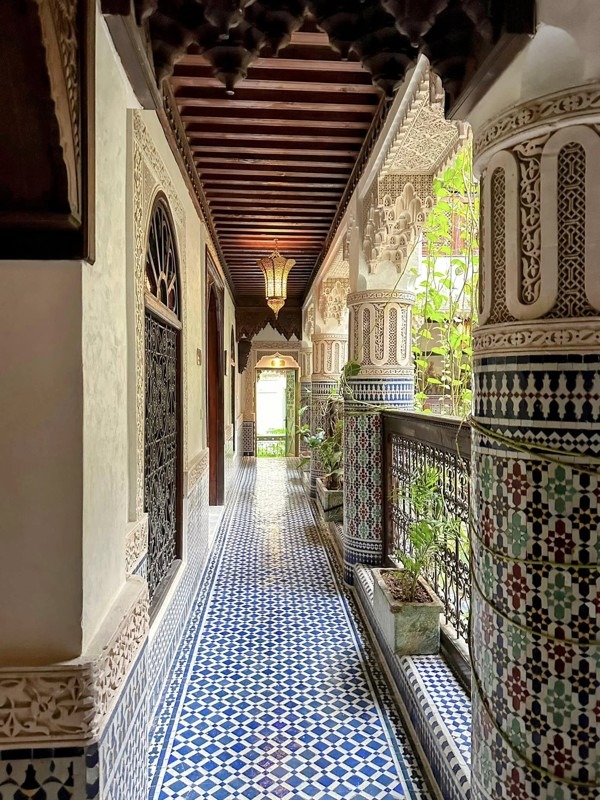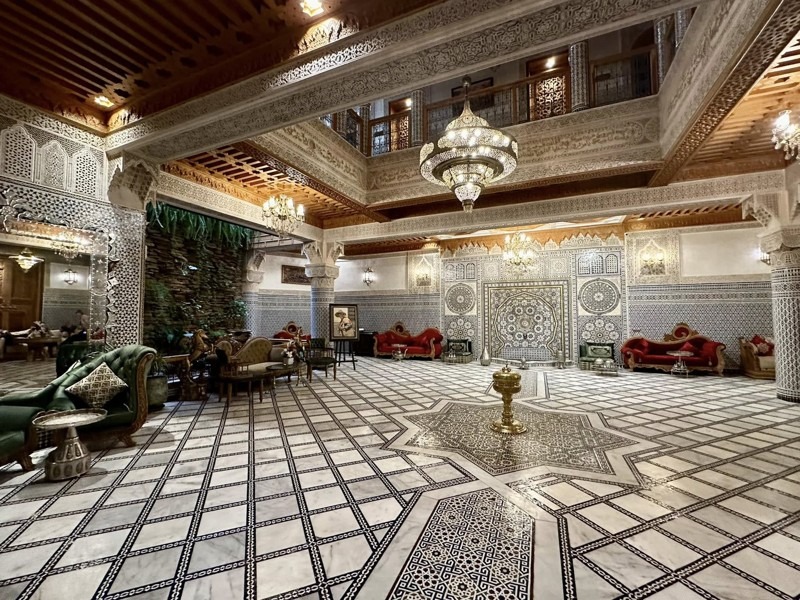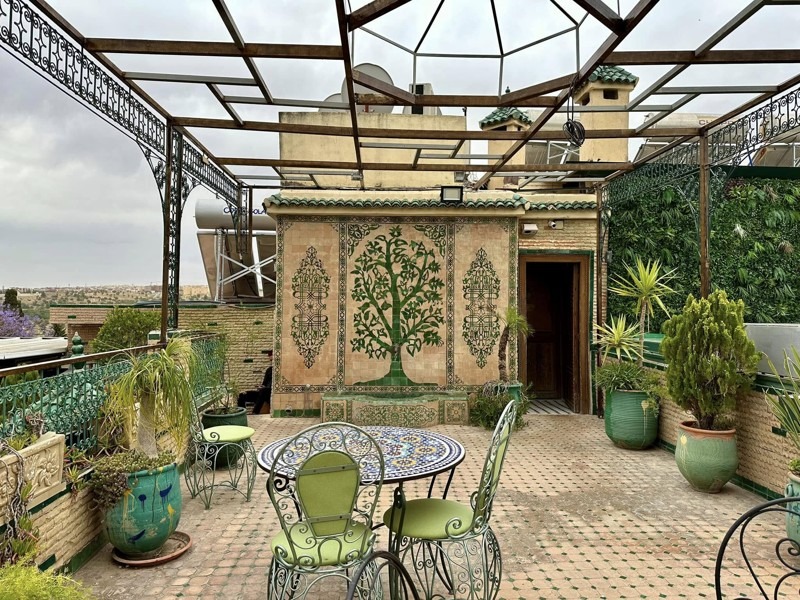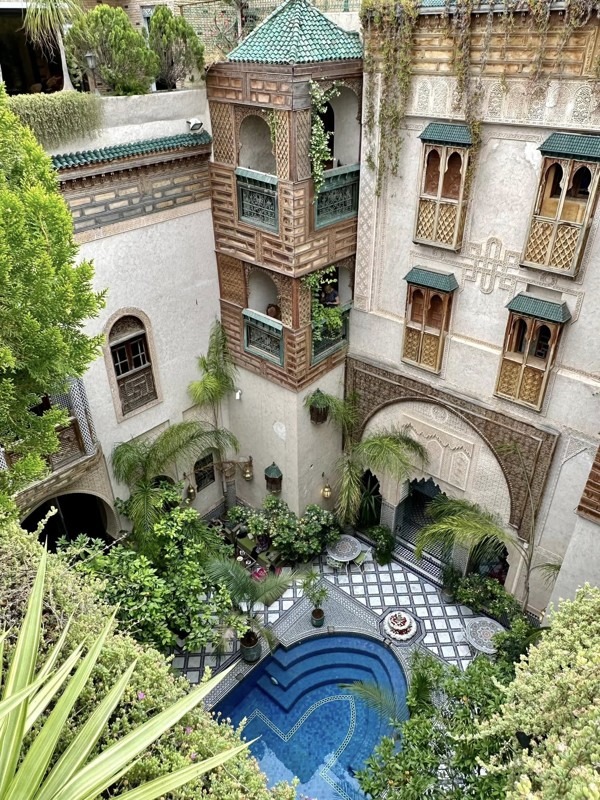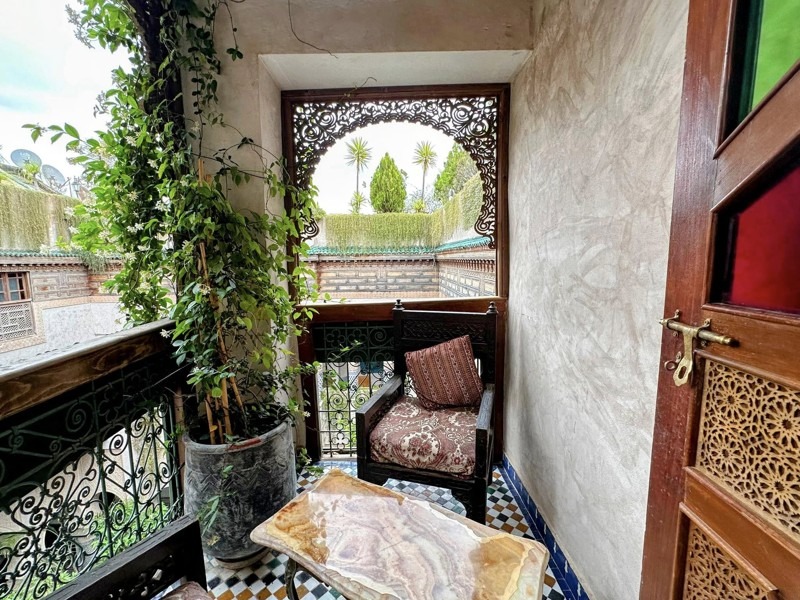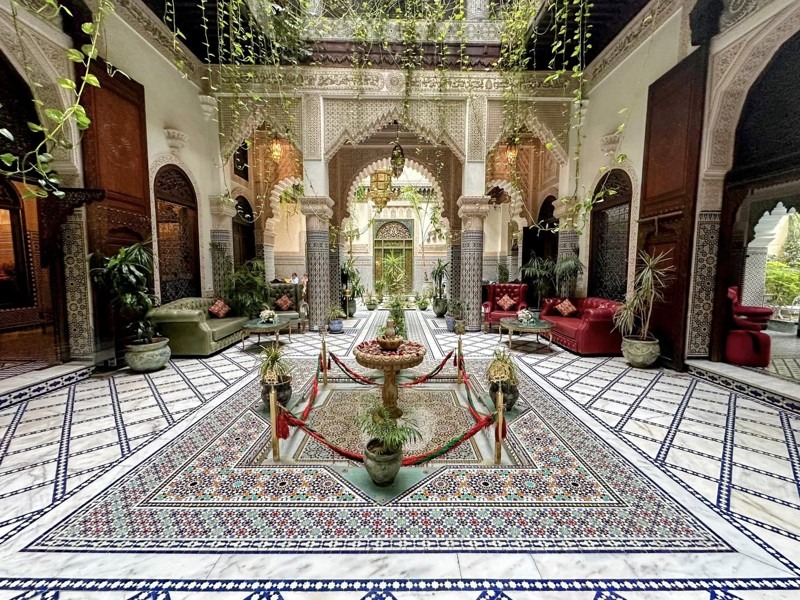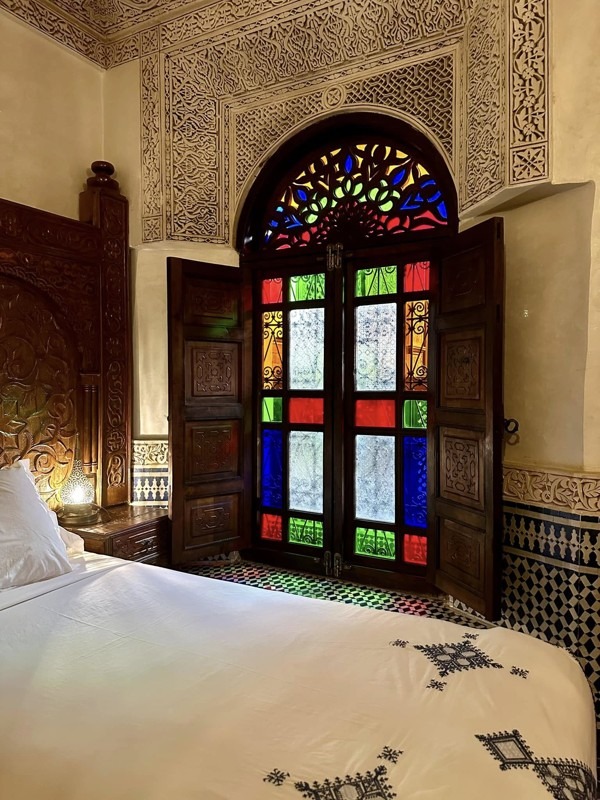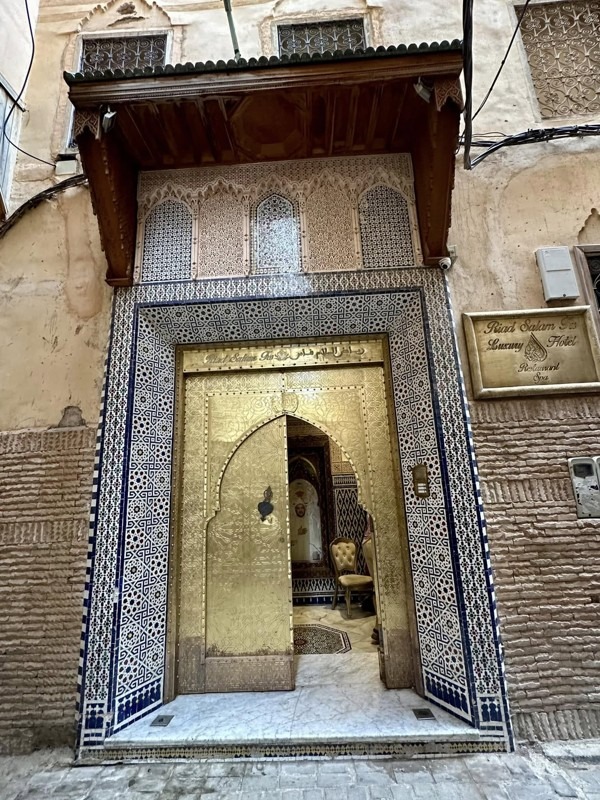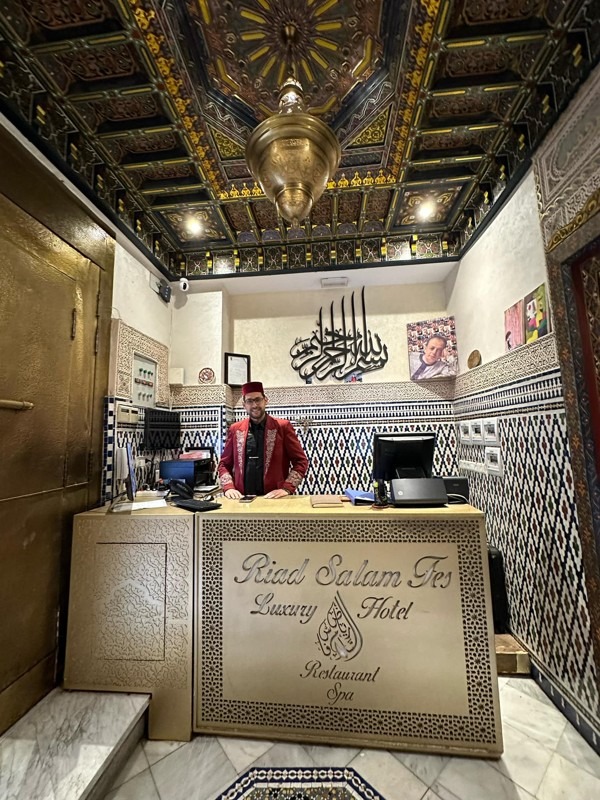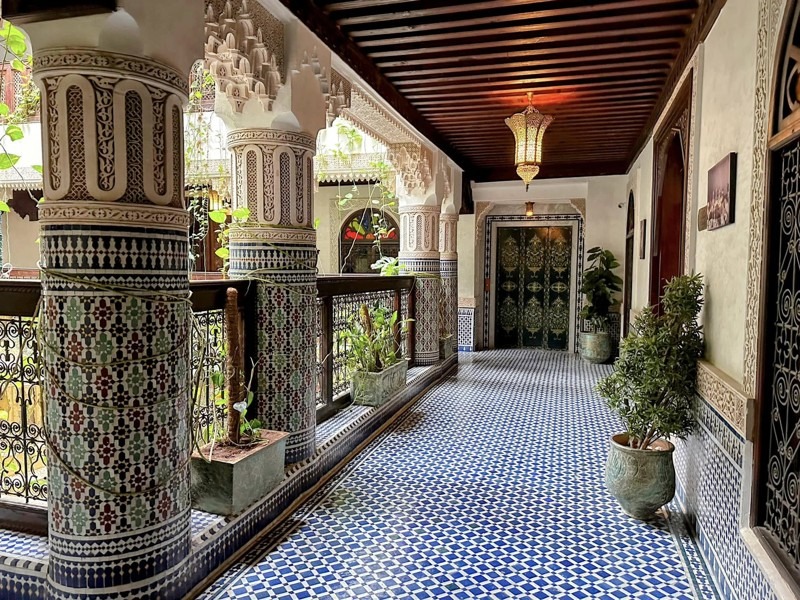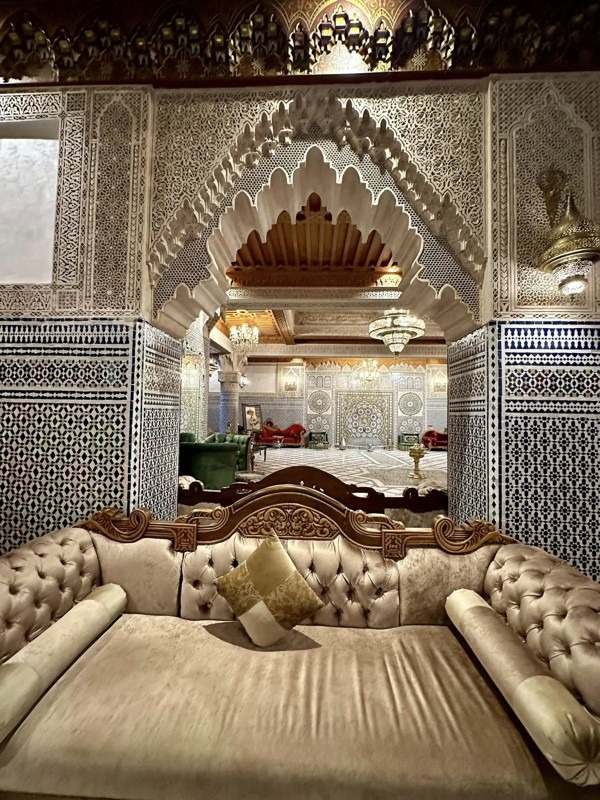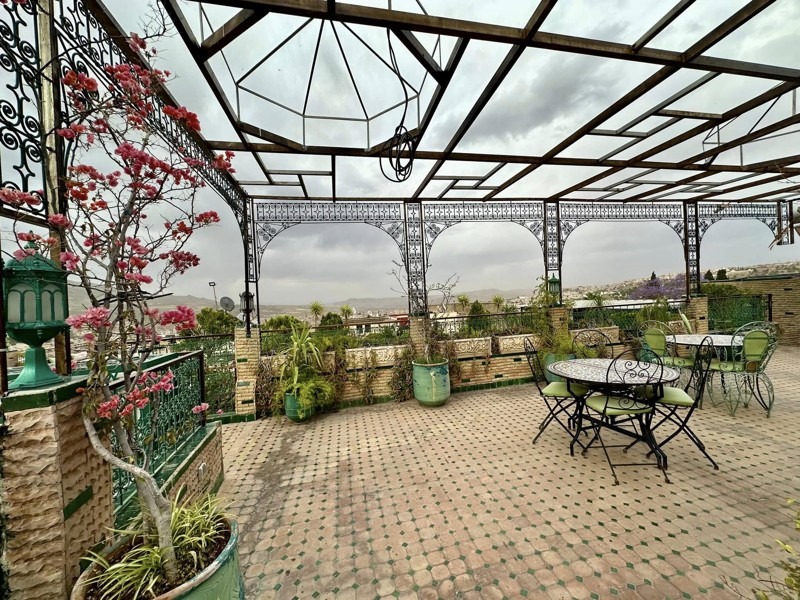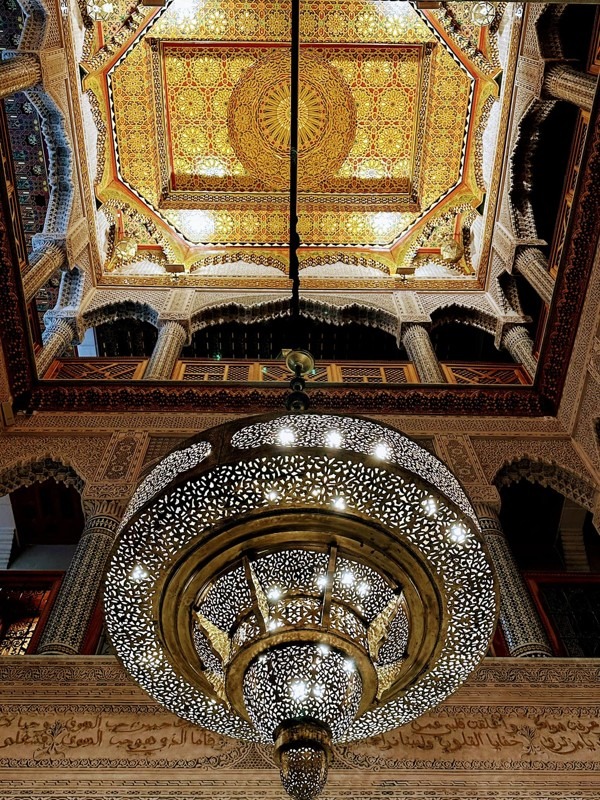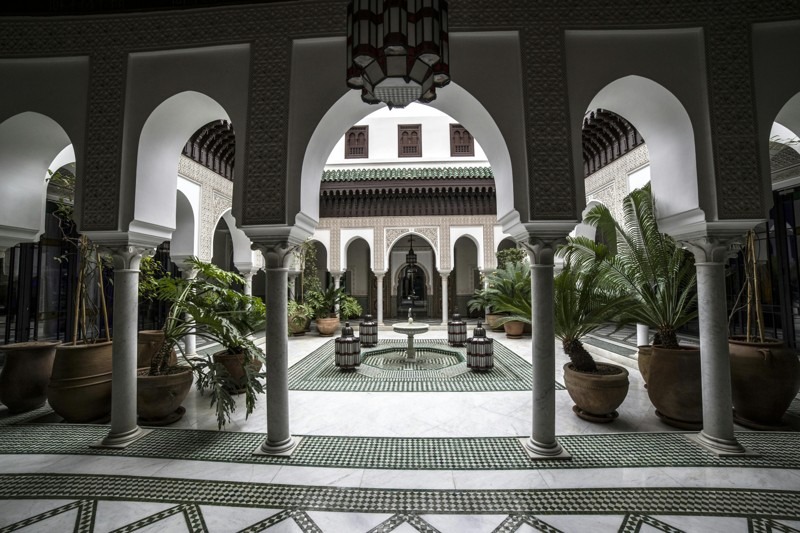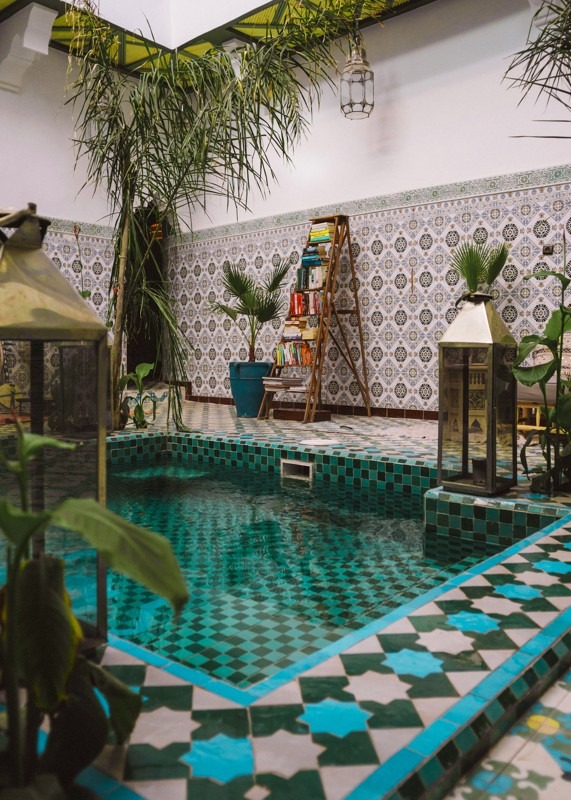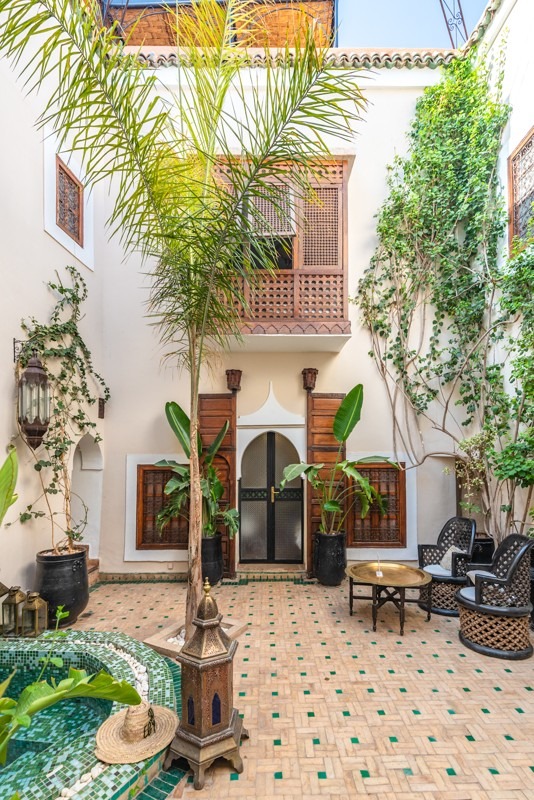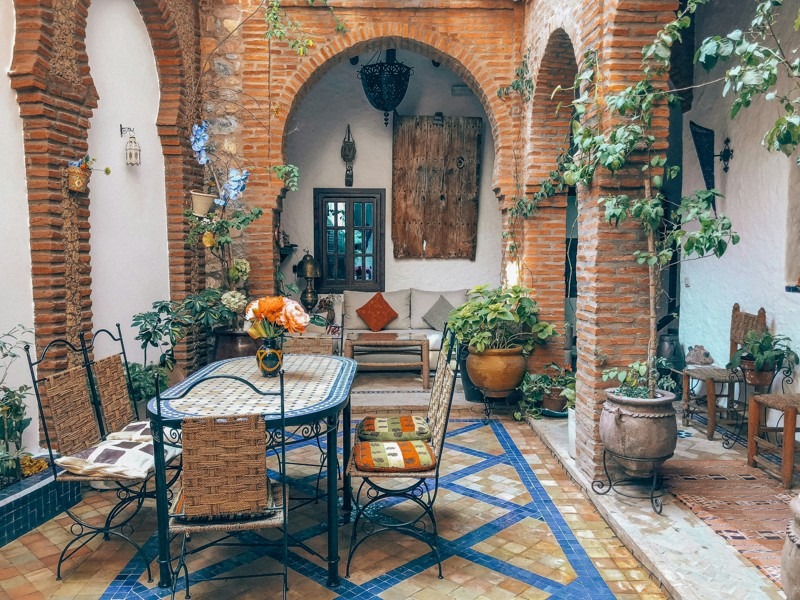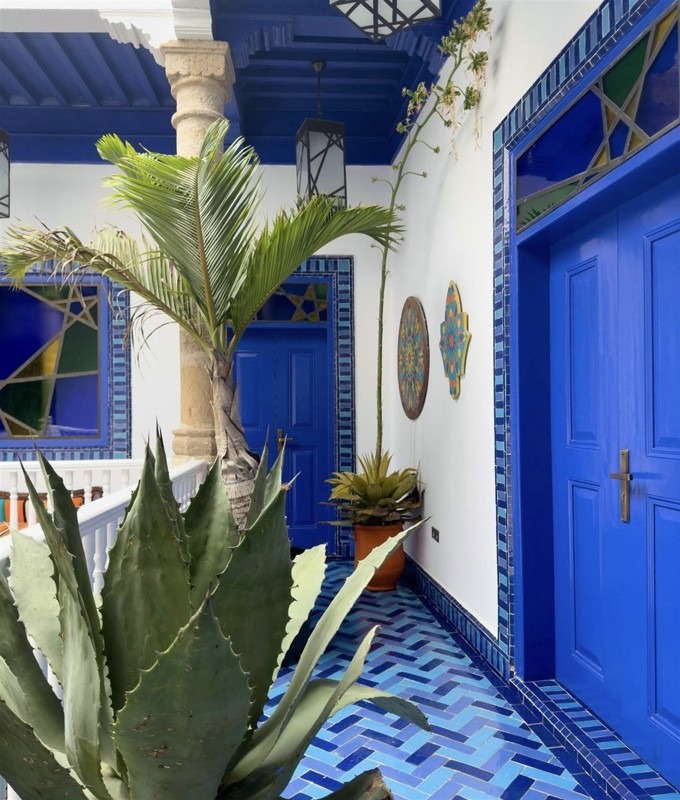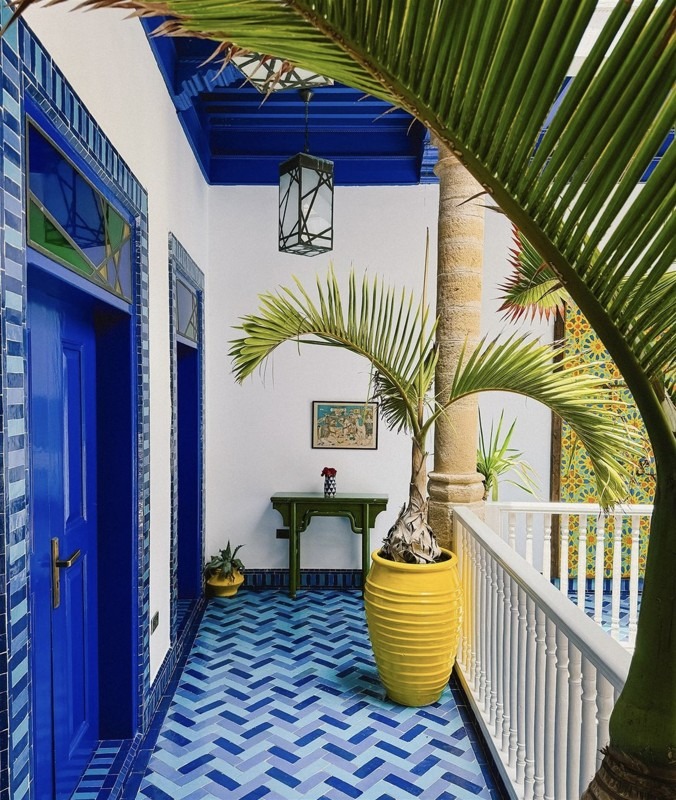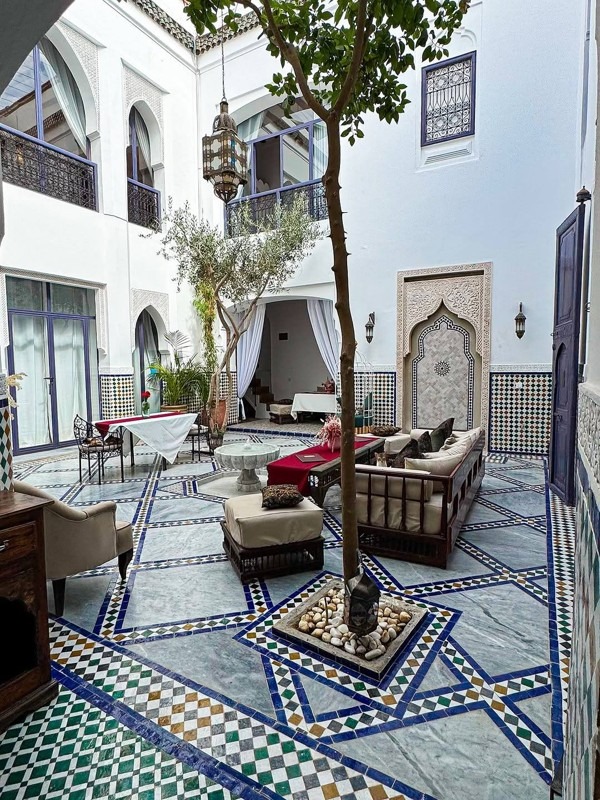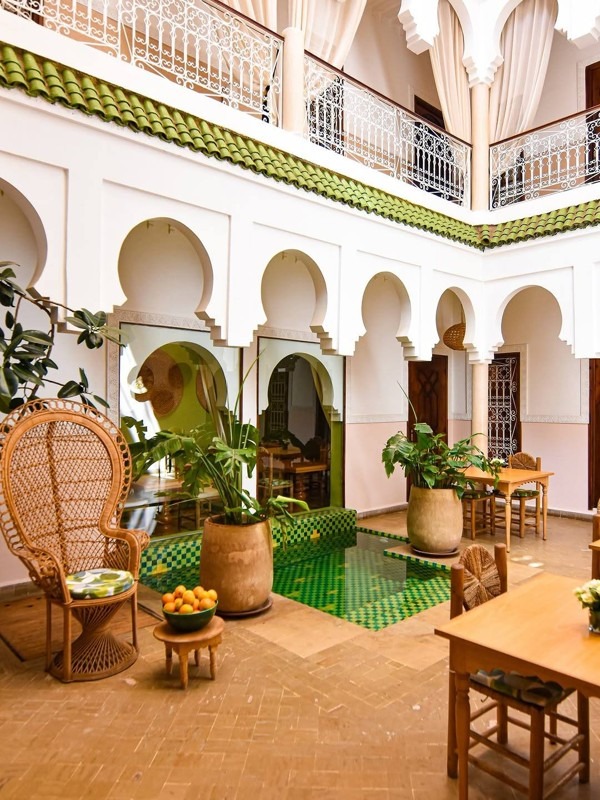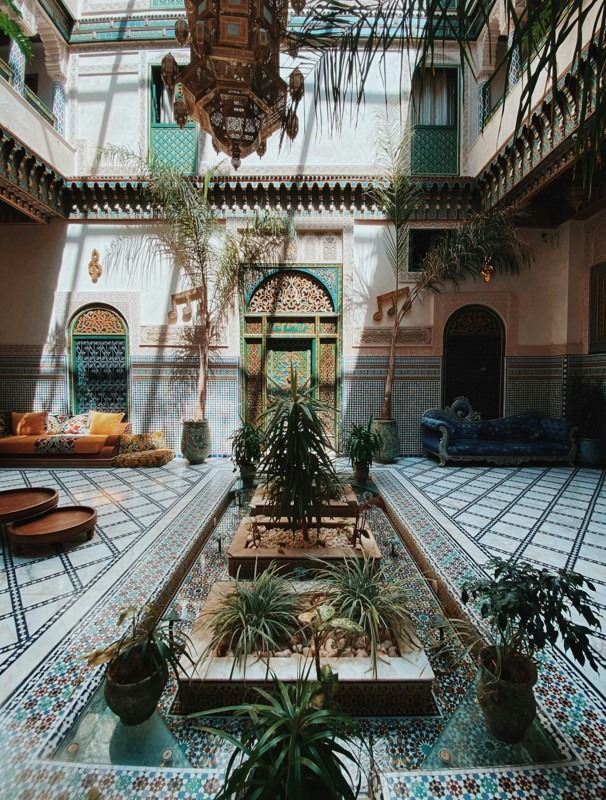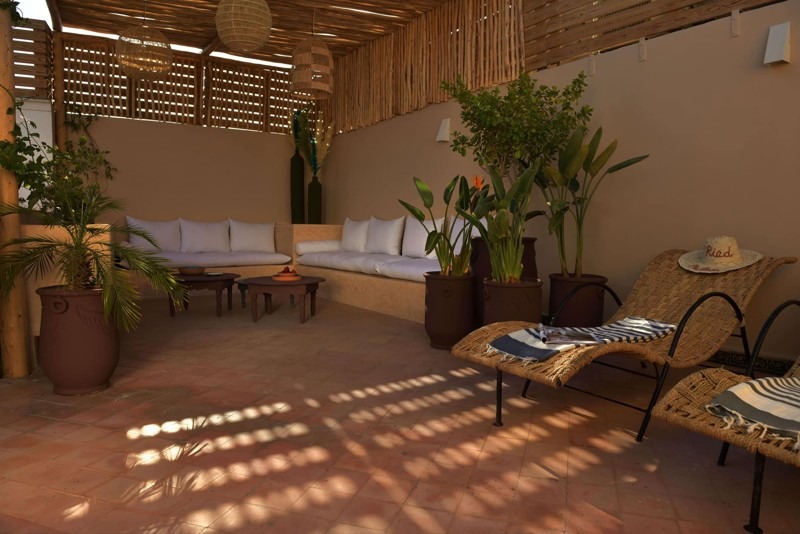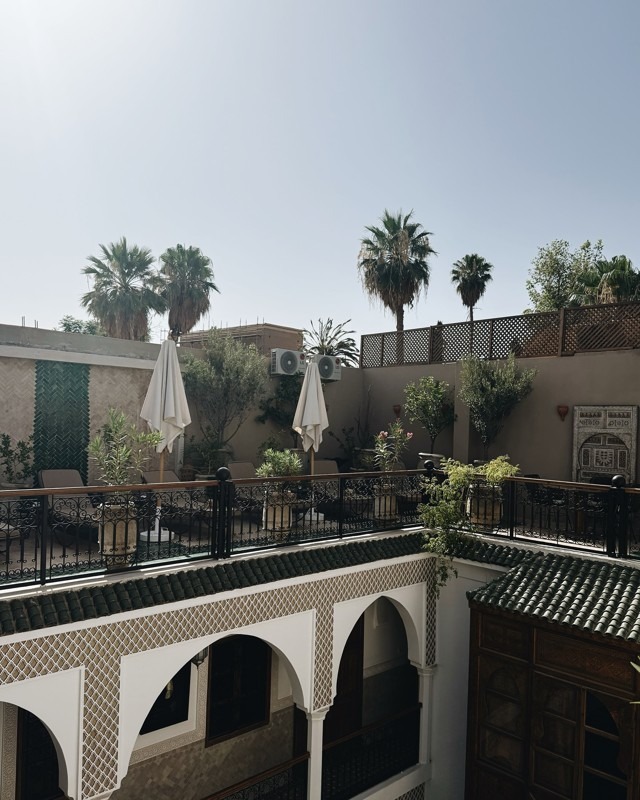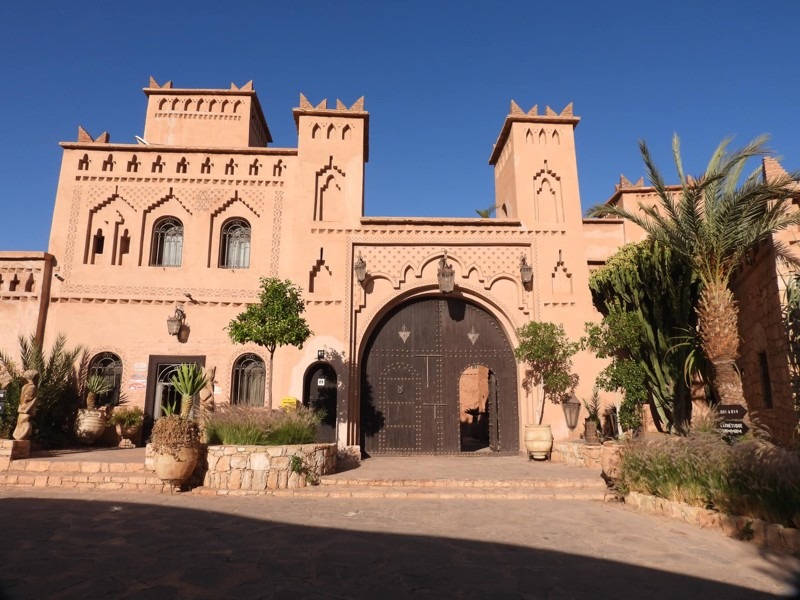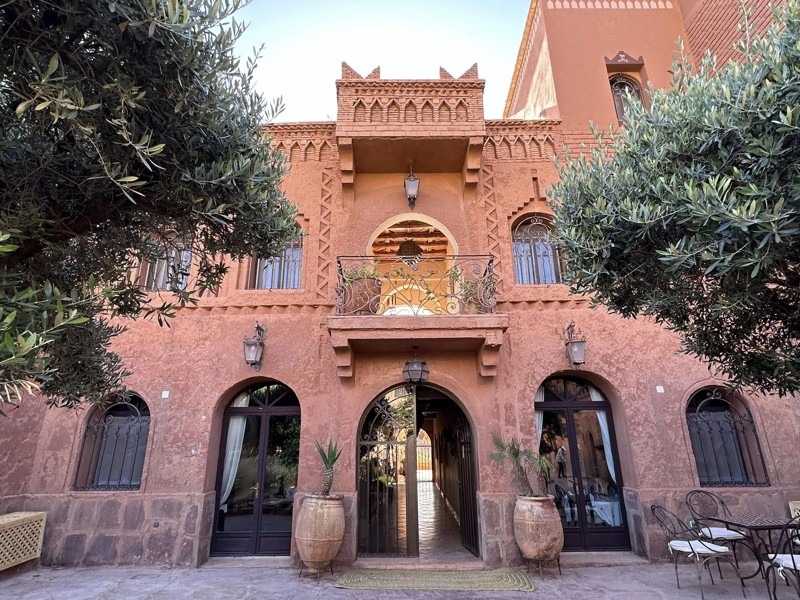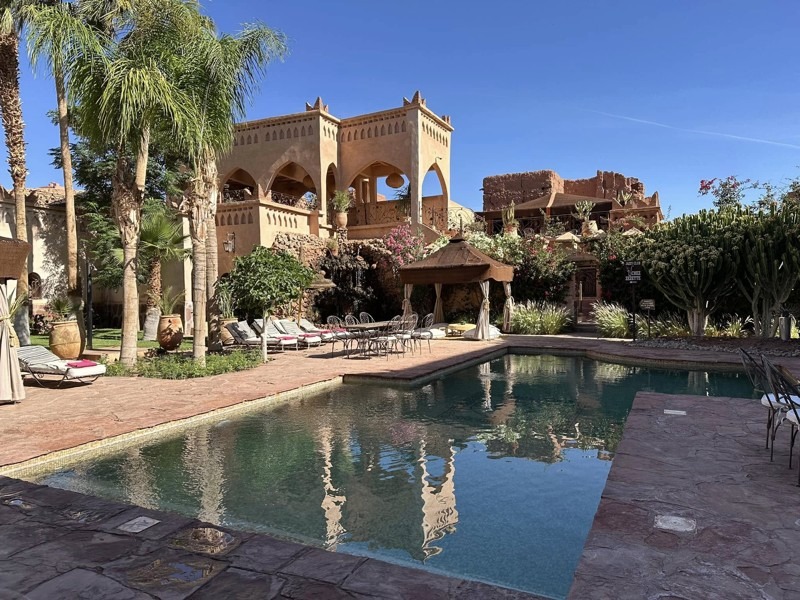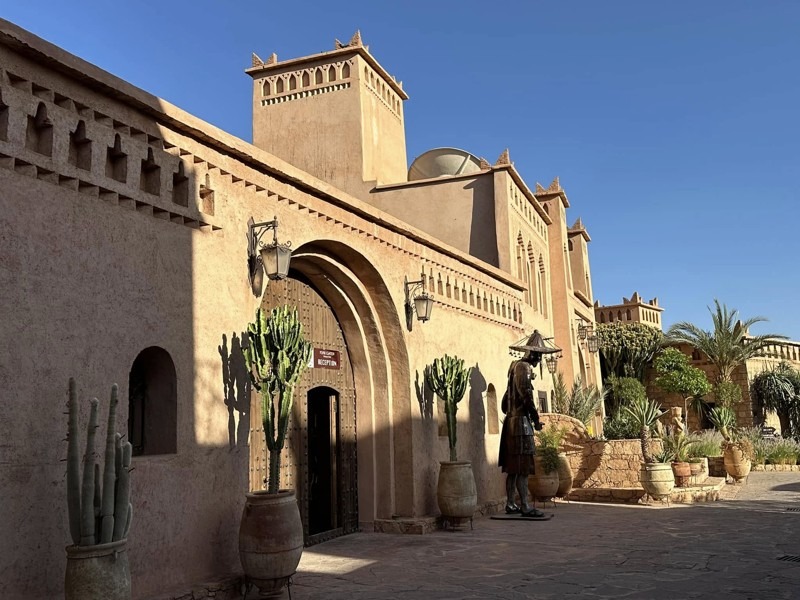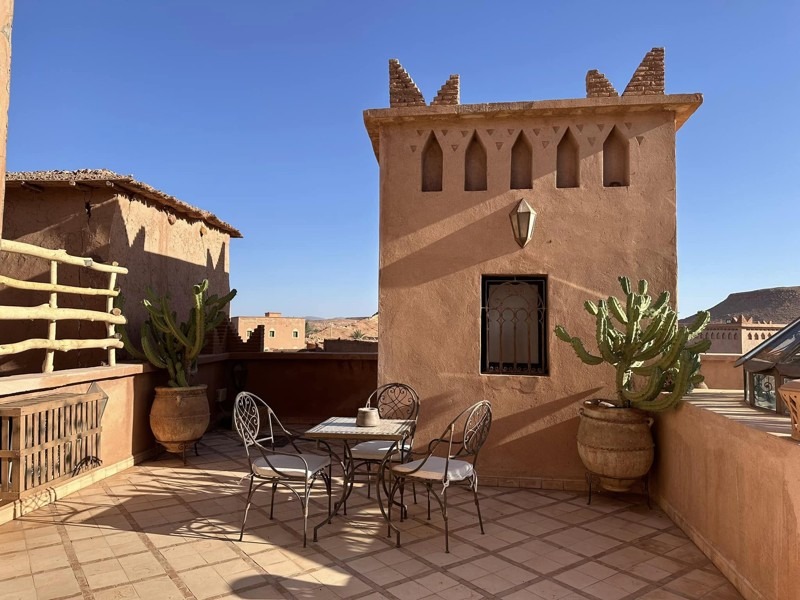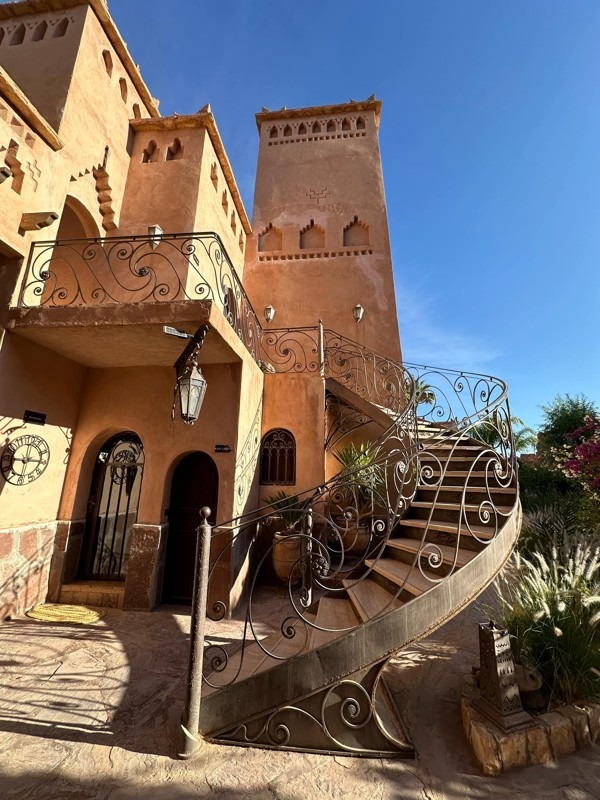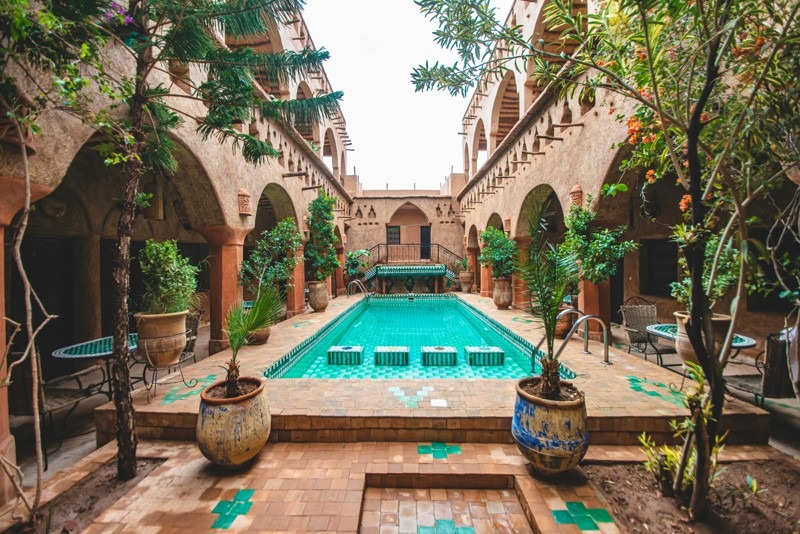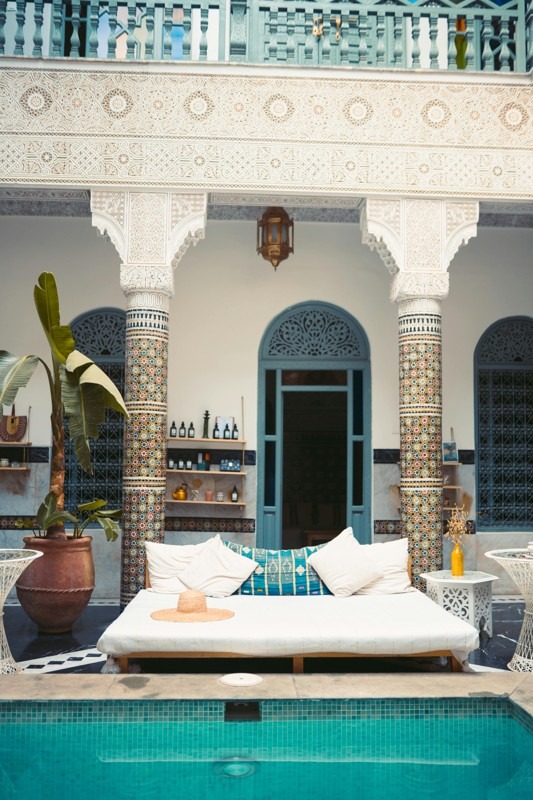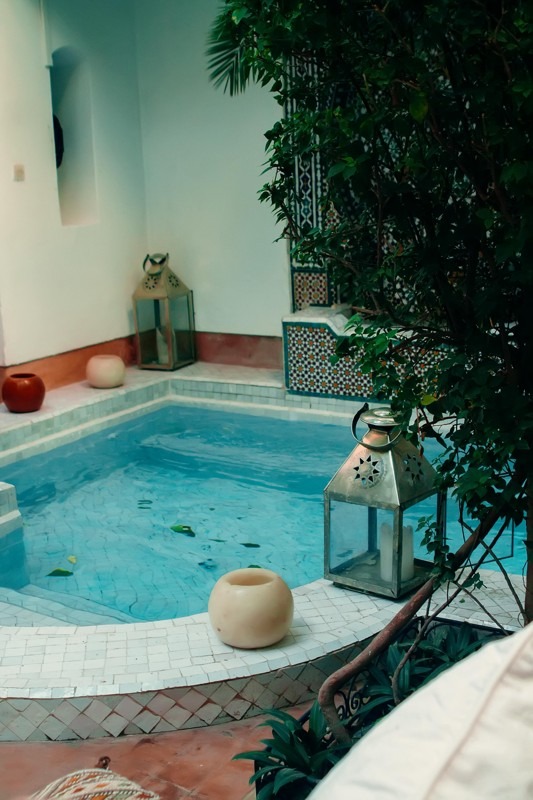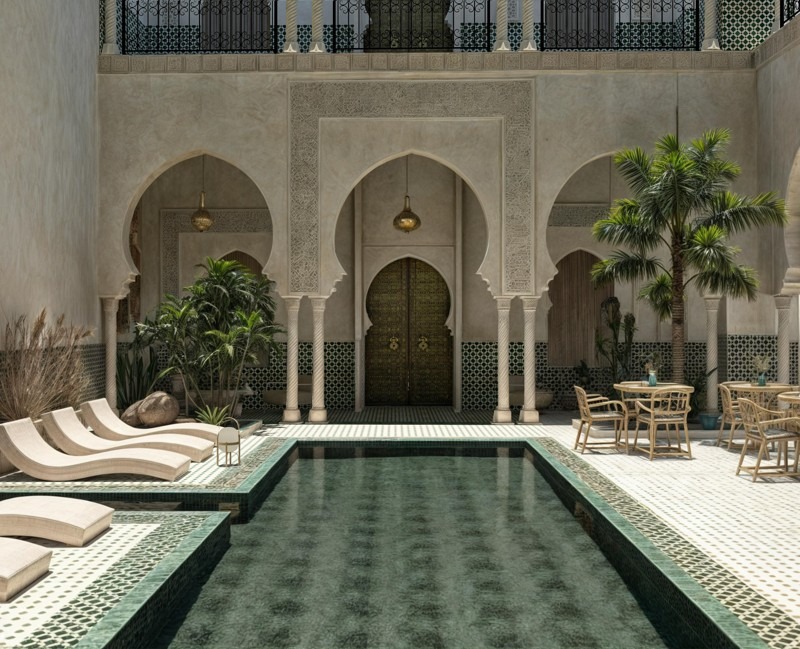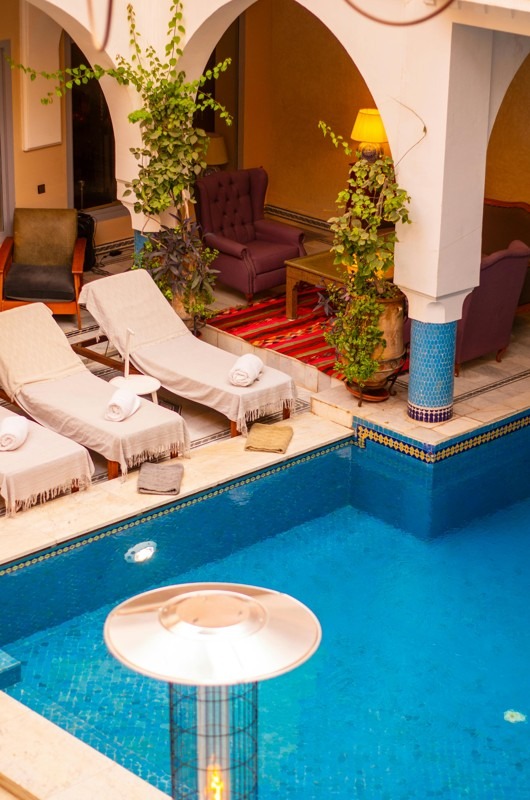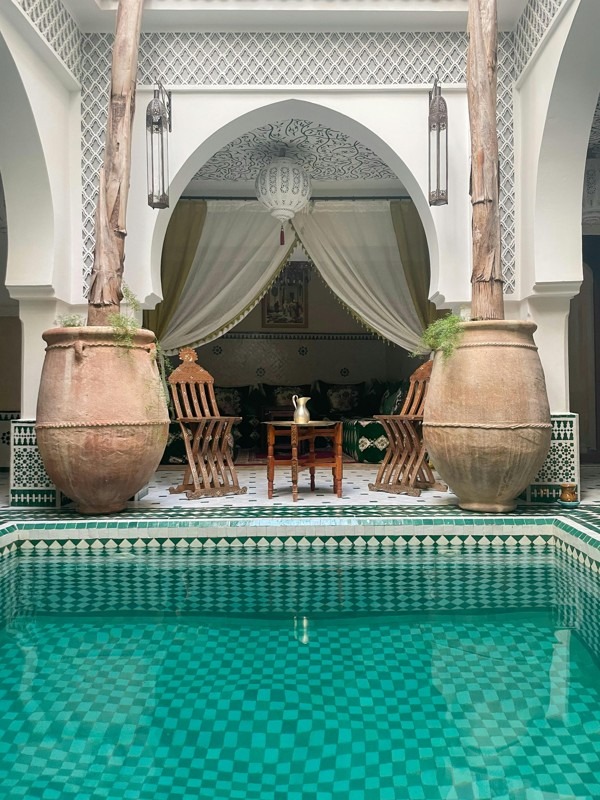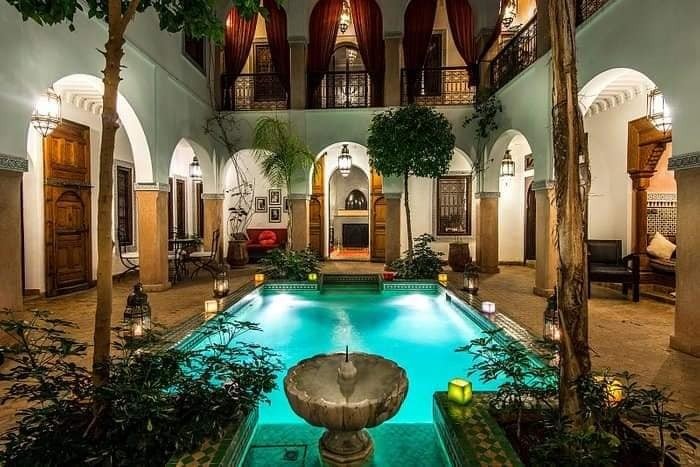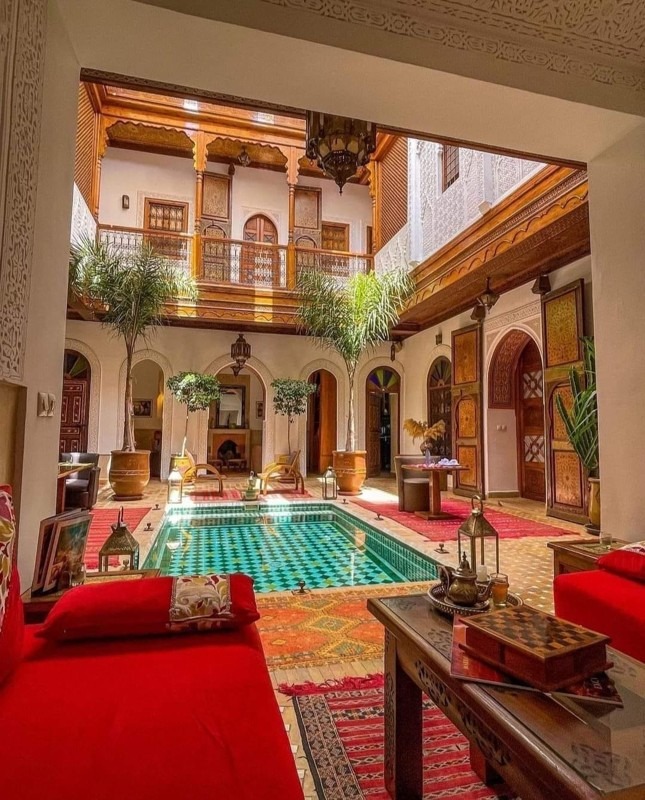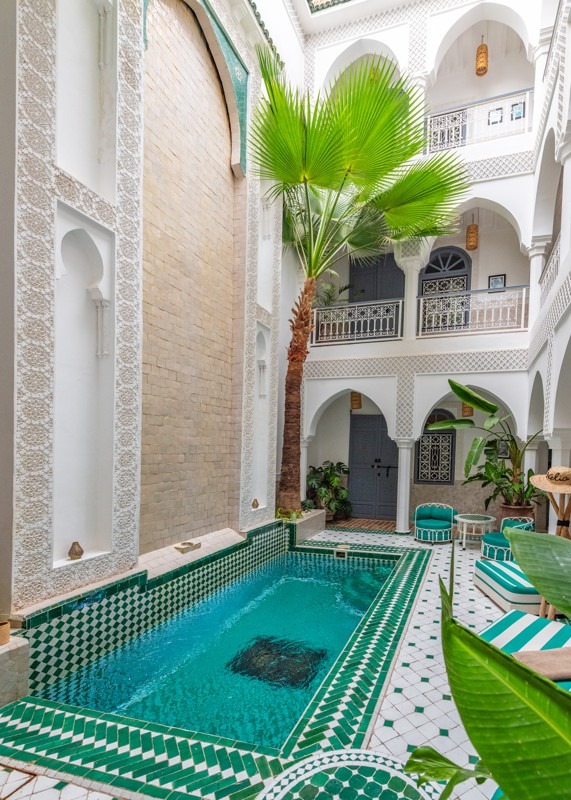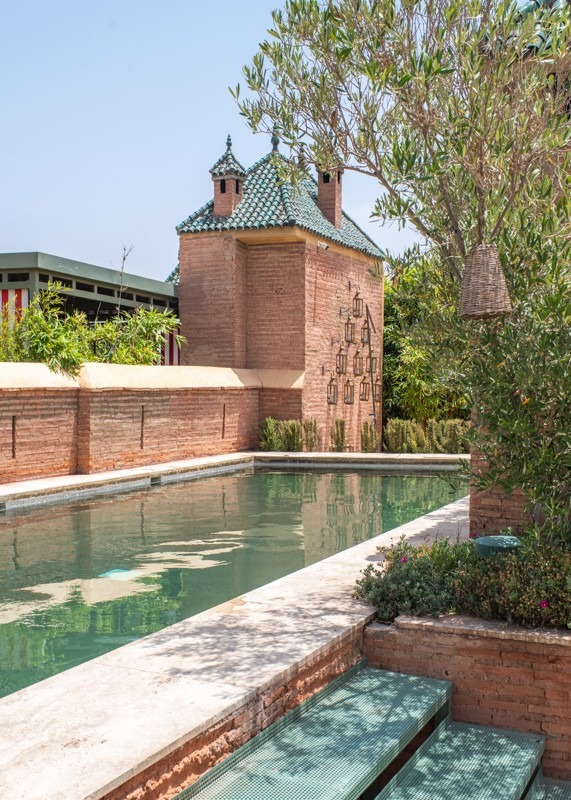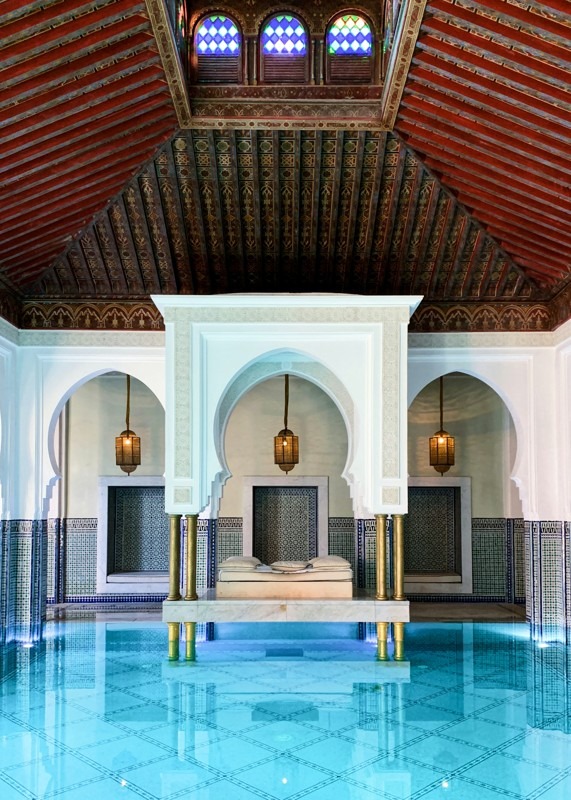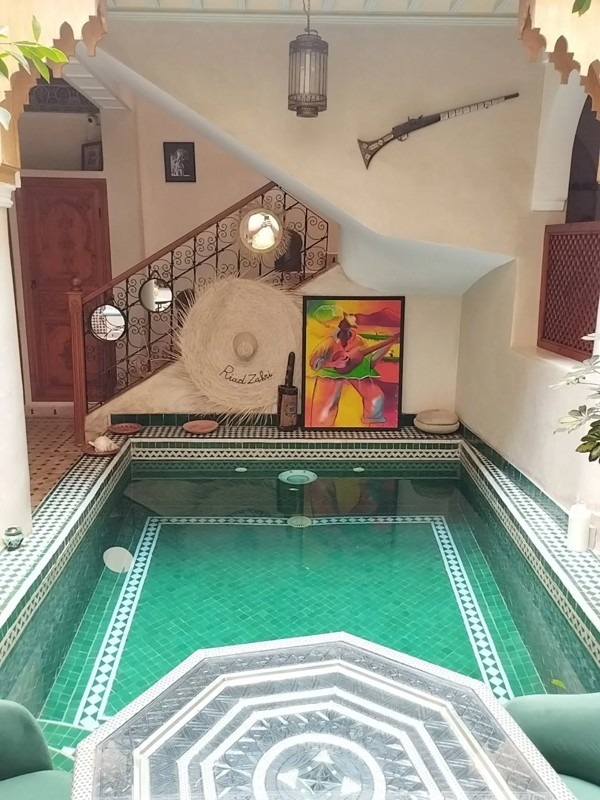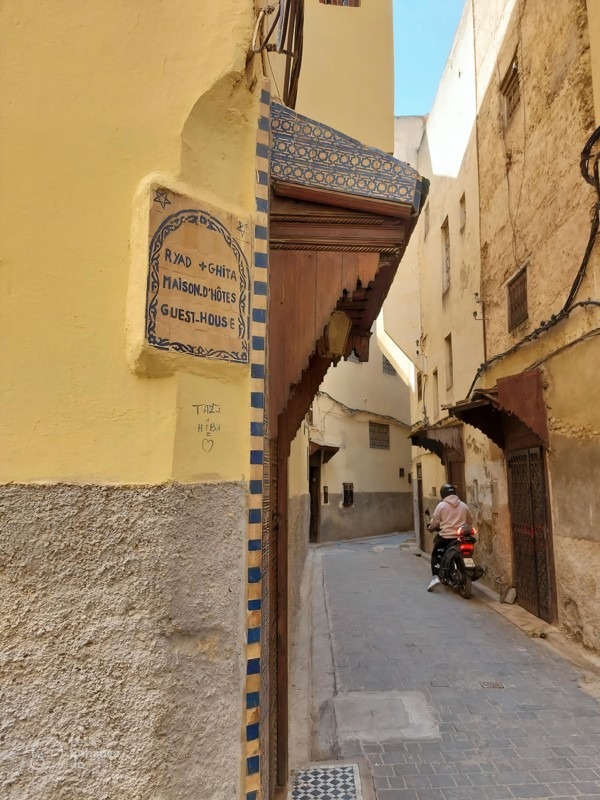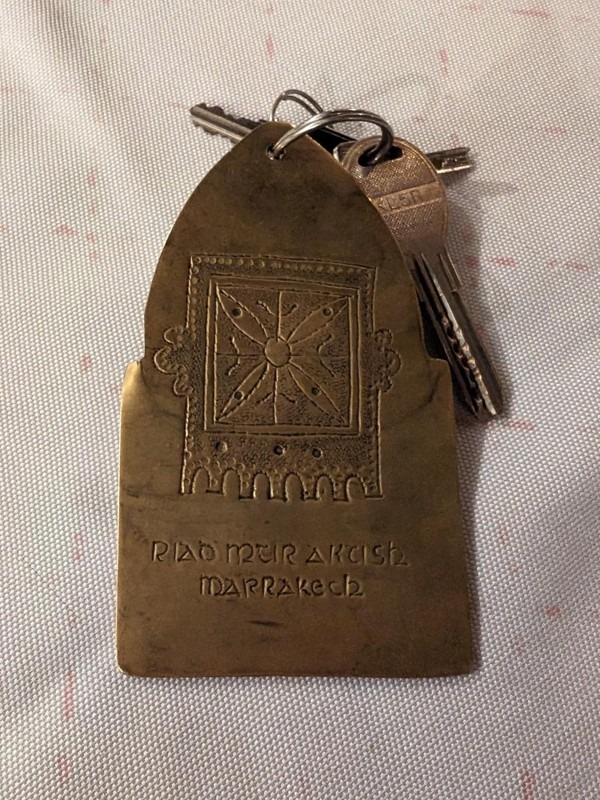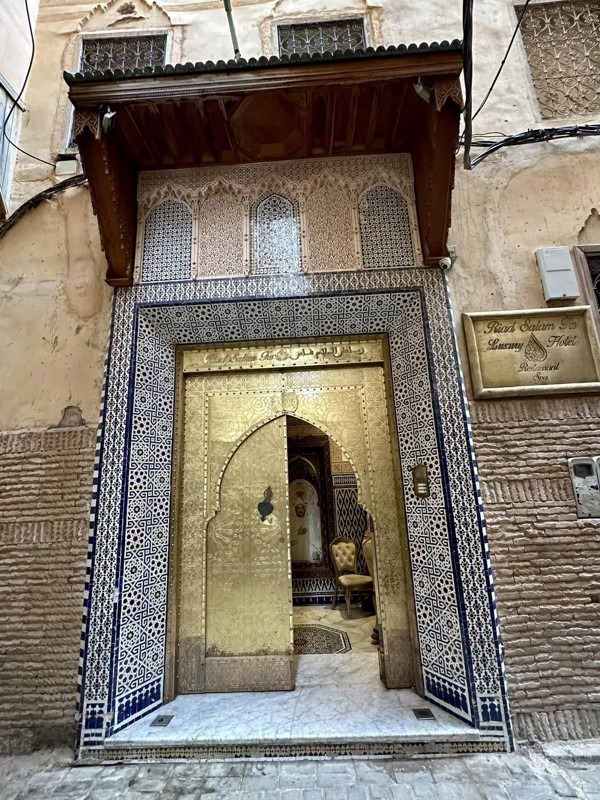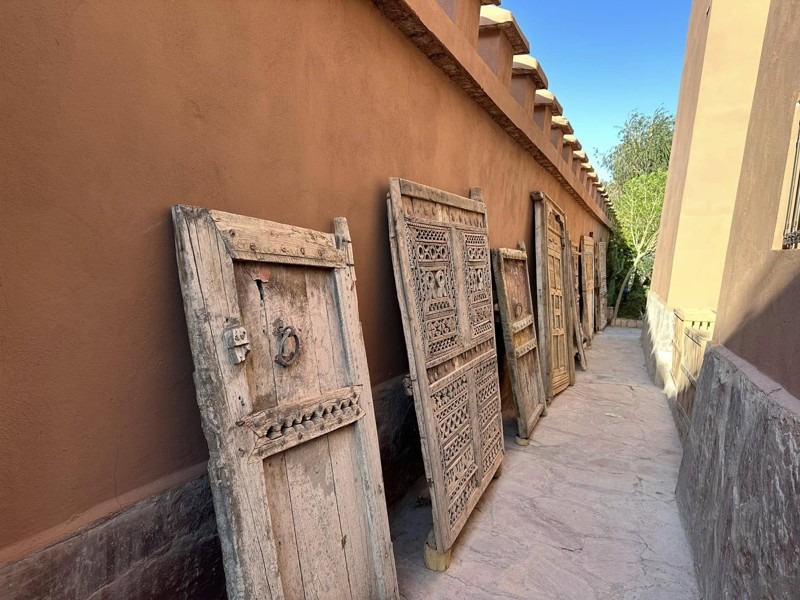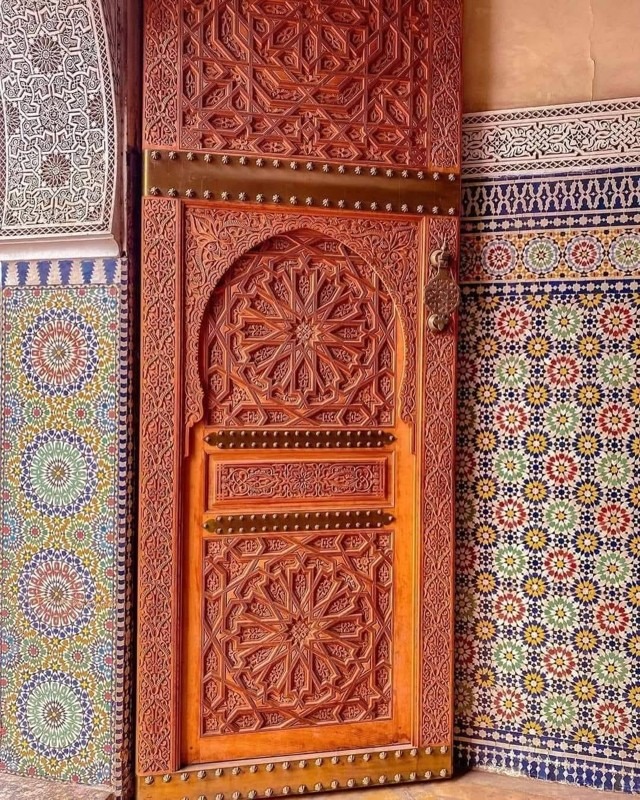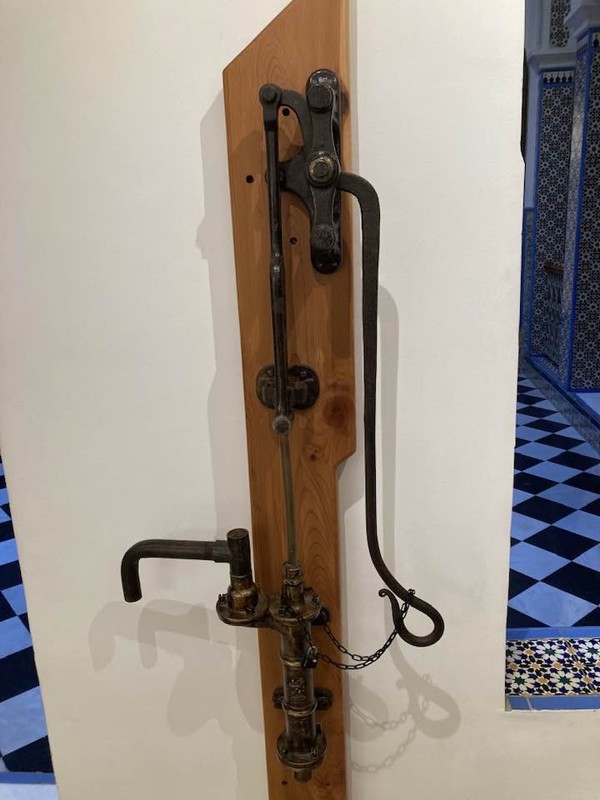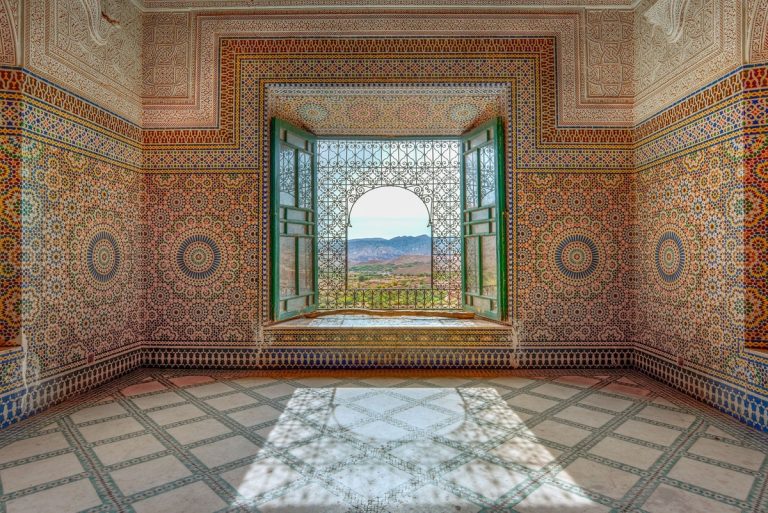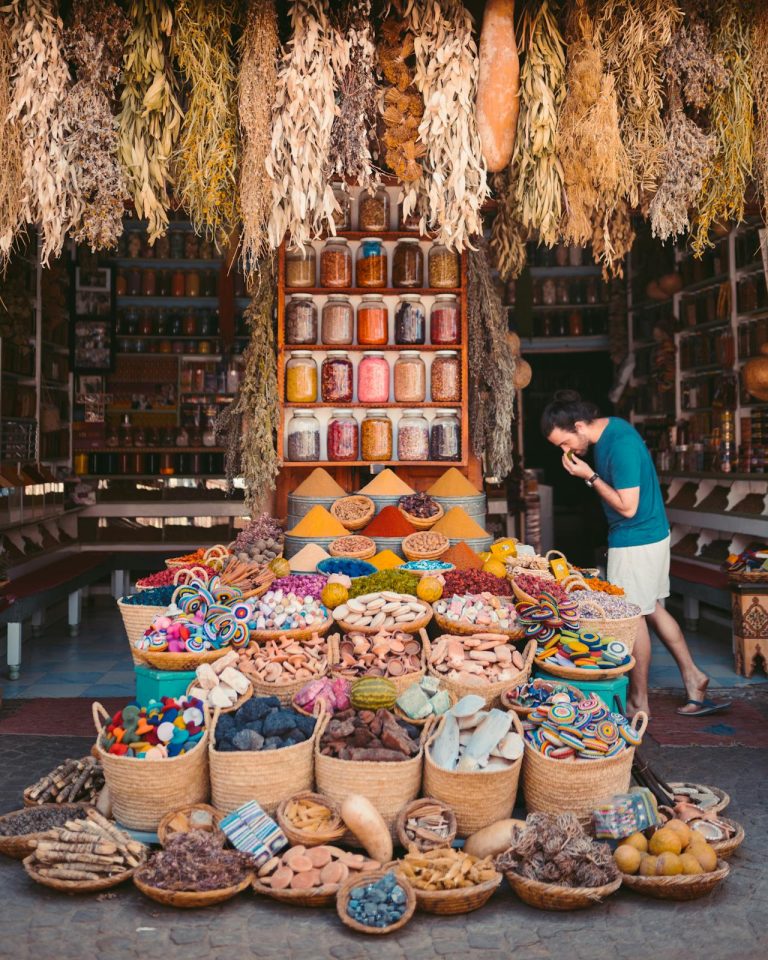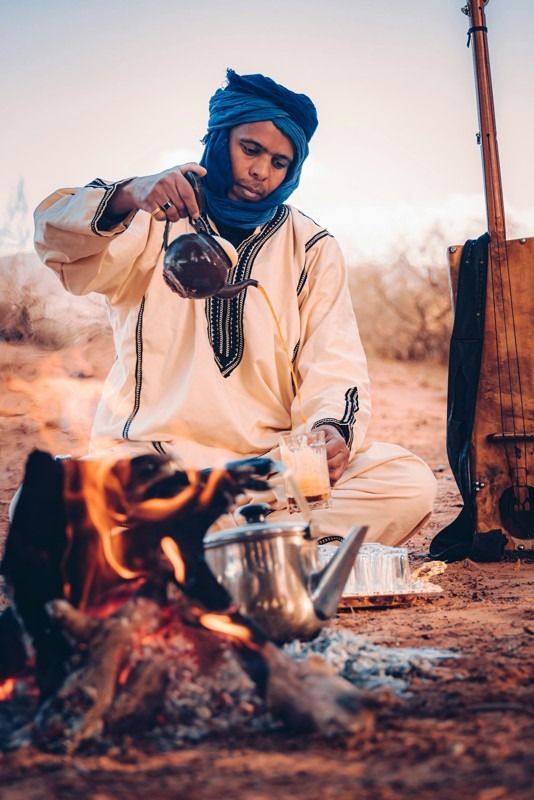The Architecture of Moroccan Riads: A Sanctuary of Peace and Beauty
When you step inside a Moroccan Riad, you feel as if you’re in a secret world of peace. When I first entered Riad Ombre in Marrakech’s medina, the clamor of the souks receded, replaced by the gentle sound of a fountain in the courtyard and birds chirping. Traditional Moroccan homes, with their elaborate patterns and inward-facing courtyards, are love poems to peace, quiet, and beauty. As a Moroccan who has drunk mint tea in riads ranging from Fez to Essaouira, I have experienced the marriage of history, skill, and spirit in these establishments. This guide, based on my experiences and the stories of other travelers, includes chapters on Moroccan Riad History, Moroccan Riad Characteristics, How to Choose the Perfect Moroccan Riad, Moroccan Riads by Town, Traditional Moroccan Architecture, and Marrakech Medina Riads. Whether you’ve always wanted to stay in a riad or are just curious about their timeless allure, this book is your chance.
Moroccan Riads History: A Legacy of Intimacy
Moroccan riads have existed for hundreds of years. They are based on the Islamic and Andalusian traditions that shaped Morocco’s cities. The term “riad” comes from the Arabic word for “garden” and refers to homes built around a courtyard with trees or a pond. According to a Fez historian, riads were originally established in medieval medinas such as Marrakech and Fez for wealthy households seeking privacy in crowded towns. Abdullah bin Abdullah, a restorer from Marrakech, told me that by the 16th century, riads were architectural masterpieces. They had simple exteriors but luxurious interiors made of zellige tiles and carved wood. Many of them, like the ones in the Medina of Marrakech, were later fixed up and turned into small hotels, which kept their history alive while welcoming tourists. They are now UNESCO World Heritage Sites that show how well Morocco can combine old traditions with new ways of being friendly.
Tip: Visit restored riads like El Fenn for a glimpse into their historical evolution.
Moroccan Riads Characteristics: Crafted for Serenity
What makes a Moroccan riad unique? It’s the inward focus, where life revolves around a courtyard that feels like an oasis. Walking through Riad Ombre, I was struck by its Traditional Moroccan Architecture: zellige mosaics in vibrant blues and greens, tadelakt plaster walls with their glossy sheen, and cedar wood ceilings carved with dizzying patterns. The courtyard, often with four orange trees or a fountain, cools the air—perfect for Morocco’s heat (25-35°C in summer). Rooms open onto this central space, ensuring privacy, as I noticed when sipping tea in a cozy salon, the medina’s noise a world away. Marble bathrooms, like those in Riad Ombre’s 45-75m² suites, add luxury, while rooftops offer views of medina rooftops or Atlas peaks.
Time to spend: 1-2 hours exploring a riad’s details.
Tip: Look for sebka lattice patterns, a hallmark of Moorish design.
Choose the Perfect Moroccan Riad: Your Home Away from Home
Choosing the perfect Moroccan Riad might make your experience much better. I have slept in both cheap hostels and fancy riads, and each one has its own flavor. Choose riads with traditional Moroccan architecture, like Riad Dar El Kebira in Rabat, for a more authentic experience. Look for tiled courtyards and stucco work.
Think about where you are? Marrakech Medina Riads are full of life, but Fez’s tranquil riads are better for history lovers. Money is also important. I paid $20 for a shared bed at Hostel Riad Marrakech Rouge, but I spent $150 on a suite by the pool at Riad El Fenn.
Check the amenities: certain riads, like Riad Ombre, provide open kitchens where you may take cooking classes for $10 to $20.
Tip: Book via Booking.com for reviews; aim for 8+ ratings.
Choose based on:
– Budget: $20-$50 (hostels), $50-$150 (mid-range), $150-$300 (luxury).
– Vibe: Social (hostels), romantic (luxury), or cultural (traditional).
– Access: 5-10 min walk to medina sights.
Moroccan Riads by Town: Where to Stay
Moroccan riads vary by city, each reflecting local character. Here’s where I’ve stayed and what travelers recommend:
Marrakech Medina Riads
Marrakech’s riads, like El Fenn, blend bold colors and modern art with zellige tiles. I loved Riad Ombre’s rooftop breakfasts ($10) overlooking the medina. Time to spend: 2-3 days. Cost: $50-$200/night. Walking time: 5-10 min to Jemaa el-Fnaa. Tip: Book early for spring (20-30°C).
Fez Riads
Fez’s riads, like Riad Laaroussa, feel like time capsules with intricate stucco. I wandered its courtyard, imagining 17th-century merchants.
Time to spend: 2 days.
Cost: $40-$150/night.
Walking time: 10 min to medina souks.
Tip: Visit in fall for cooler walks (15-25°C).
Rabat Riads
Rabat’s Riad Dar El Kebira offers calm near the Kasbah of the Oudayas. Its marble bathrooms were a post-sightseeing haven.
Time to spend: 1-2 days.
Cost: $50-$120/night.
Walking time: 10 min to Hassan Tower.
Tip: Ideal for coastal views.
Essaouira Riads
Essaouira’s riads, like Riad Mimouna, face the Atlantic, blending Berber and French styles. I sipped tea on its rooftop, watching kitesurfers.
Time to spend: 1-2 days.
Cost: $30-$100/night.
Walking time: 5 min to medina.
Tip: Visit in winter for mild weather (15-20°C).
Marrakech Medina Riads: The Heart of the Red City
The Marrakech Medina Riads are a sensory feast, hidden behind unassuming doors in the UNESCO-listed old city. At Riad El Fenn, I marveled at Popham Design’s colorful tiles, a modern twist on Traditional Moroccan Architecture. These riads, often restored by locals like Abdullah bin Abdullah, balance history with luxury—think terracotta walls and rooftop pools. I spent an evening at Riad Ombre’s salon, chatting with guests, the courtyard’s fountain a soothing backdrop.
Time to spend: 1-2 hours relaxing in salons or rooftops.
Tip: Visit in early morning to avoid medina crowds.
Traditional Moroccan Architecture: The Soul of Riads
Traditional Moroccan Architecture defines riads, blending Islamic, Berber, and Andalusian influences. I ran my fingers over zellige tiles at Riad Laaroussa in Fez, their geometric patterns hypnotic. Courtyards, often with four trees symbolizing paradise, cool the air via natural ventilation—a godsend in 35°C heat. Tadelakt plaster, as I saw in Essaouira, resists humidity, while carved cedar doors add warmth. Willem Schmidt, a Dutch designer, told me riads’ plain exteriors protect against medina chaos, creating a “piece of sky” within.
Tip: Look for stucco arabesques in older riads for authentic craftsmanship.
Practical Tips for Staying in Moroccan Riads
From my stays and traveler insights:
FAQs for Staying in Moroccan Riads
Moroccan Riads: Your Gateway to Morocco’s Soul
Moroccan riads are more than homes—they’re sanctuaries of peace, woven with Traditional Moroccan Architecture and stories of the past. From the vibrant Marrakech Medina Riads to Fez’s historic gems, they invite you to slow down and savor Morocco’s heart. As a Moroccan who’s lingered in their courtyards, I urge you to Choose the Perfect Moroccan Riad and let these spaces—alive with tiles, fountains, and history—inspire your journey.

